|
All the articles beginning with the latest
|
Last Post
|
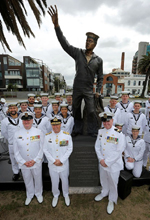 Sadly Mac did not live to see his dream materialise. But he would no doubt have been delighted that the statue has been erected as he envisaged many years ago, on the foreshore at Port Melbourne looking out at the entry to Port Phillip Bay, the point from where as a young midshipman he left for WW II and from where his ashes were scattered on 3 September 2014, on the outgoing tide. Read the article. Sadly Mac did not live to see his dream materialise. But he would no doubt have been delighted that the statue has been erected as he envisaged many years ago, on the foreshore at Port Melbourne looking out at the entry to Port Phillip Bay, the point from where as a young midshipman he left for WW II and from where his ashes were scattered on 3 September 2014, on the outgoing tide. Read the article.
|
|
|
|
We have had a suggestion that a Gallipoli Oak tree could be planted next year in honour of Mac ... Read the article.
|
|
|
Grand Legacy - Tom Sanger
|
We never met except by email ... I was able to share on your website the recollections of my grandmother, Rhoda Thomas, who was a passenger on Athenia ... None of this would have happened were it not for “Ahoy.”
Read the article.
|
|
|
Amazing Legacy Supporting The World Over - Linda
|
In one of the articles on your dad's website there is an image of someone from the back and I believe it to be my mother's father. We only have one tiny image of him in the family and none of the other three, so even this back image is hugely important to us - thanks to your father.
Read the article.
|
|
|
Tribute: Vale - Lieutenant Commander Mackenzie ‘Mac’ Jesse Gregory, Royal Australian Navy (Retired)
|
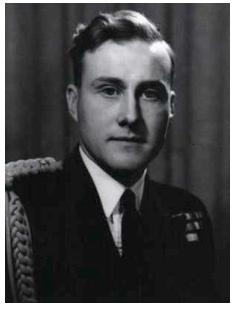 “It was 1.43 a.m. when it all started. I could see six Japanese cruisers plus a destroyer 3,000 yards away blasting away at us with 8 inch guns and torpedos.” He remembers saying – “My God, this is bloody awful.” More than 80 Australian sailors died or were mortally wounded as Japanese shells slammed into the ship, which caught fire and was later scuttled. Clutching his Officer of the Watch issued binoculars he would lucidly tell the story some 70 years later and conclude with the reflection “I was very fortunate.”
Read the article. “It was 1.43 a.m. when it all started. I could see six Japanese cruisers plus a destroyer 3,000 yards away blasting away at us with 8 inch guns and torpedos.” He remembers saying – “My God, this is bloody awful.” More than 80 Australian sailors died or were mortally wounded as Japanese shells slammed into the ship, which caught fire and was later scuttled. Clutching his Officer of the Watch issued binoculars he would lucidly tell the story some 70 years later and conclude with the reflection “I was very fortunate.”
Read the article.
|
|
|
Mac Gregory’s long held dream to erect a naval memorial to eventuate
|
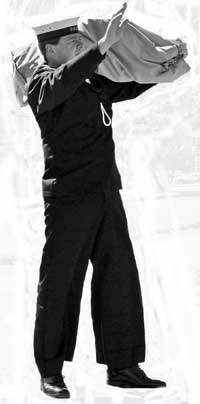 Visitors to Ahoy will recall that many years ago Mac announced that he had founded the Naval Heritage Foundation of Australia Inc. with one of its purposes being to commission artists to create a statue to commemorate and symbolize all Naval personnel in Victoria. Visitors to Ahoy will recall that many years ago Mac announced that he had founded the Naval Heritage Foundation of Australia Inc. with one of its purposes being to commission artists to create a statue to commemorate and symbolize all Naval personnel in Victoria.
Louis Laumen has commenced work on the clay model and it is anticipated that the bronze statue will take approximately eight months to complete. Mac had hoped to unveil it in mid April 2015, prior to the Centenary of ANZAC. Read the article.
|
|
|
How High Can Birds Fly?
|
 I was sitting in my chair the other morning gazing out of our third floor apartment window, as a flock of seagulls sped by. In my mind they triggered the question, /just how high can birds fly? Read the article. I was sitting in my chair the other morning gazing out of our third floor apartment window, as a flock of seagulls sped by. In my mind they triggered the question, /just how high can birds fly? Read the article.
|
|
|
The U-Boats versus Convoy SC121
|
On March 6, 1943, 59 ships formed up as SC121 and sailed out of Sydney, Breton Island in Canada, bound for Liverpool UK...Too few escorts caused SC121 to lose fourteen ships with one more damaged. Read the article.
|
|
|
In Memory of Bull Allen
|
This short film tells the little-known story of Leslie 'Bull' Allen, brought up in hardship in Ballarat in regional Victoria, to become a courageous, complex war hero Read the article.
|
|
|
The Saga Of American Freighter City of Flint
|
An SOS had been read by an empty Norwegian Tanker, Knute Nelson, a luxury steam yacht Southern Cross from Norway, three British Destroyers Escort, Electra, Fame, who were escorting HMS Renown, and finally a United States freighter SS City of Flint. Read the article.
|
|
|
National Trust ( Vic ) Gallipoli Oaks Project
|
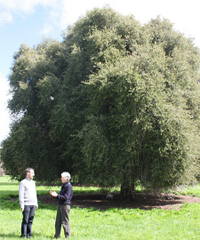 As part of its commitment to celebrate and preserve our environmental heritage, the Trust plans to propagate up to 2000 juvenile Gallipoli oaks to be planted in Victorian primary school grounds during remembrance ceremonies in the period 2015 to 2018. Read the article. As part of its commitment to celebrate and preserve our environmental heritage, the Trust plans to propagate up to 2000 juvenile Gallipoli oaks to be planted in Victorian primary school grounds during remembrance ceremonies in the period 2015 to 2018. Read the article.
|
|
|
|
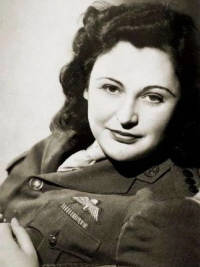 The ashes of Australia's most decorated World War II servicewoman, former saboteur and spy Nancy Wake, have been scattered at a ceremony in France. A heroine in France, which decorated her with its highest honour, the Légion d'honneur, as well as three Croix de Guerre and a French Resistance Medal - ABC News Updated Mon Mar 11, 2013 9:20am AEDT Read the article. The ashes of Australia's most decorated World War II servicewoman, former saboteur and spy Nancy Wake, have been scattered at a ceremony in France. A heroine in France, which decorated her with its highest honour, the Légion d'honneur, as well as three Croix de Guerre and a French Resistance Medal - ABC News Updated Mon Mar 11, 2013 9:20am AEDT Read the article.
|
|
|
HM Troopship Plassy
|
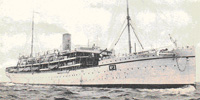 During the Boer War, Plassy was one of around 50 liners that carried over 150,000 troops to the war – an average of 5,500 soldiers per year each. Read the article. During the Boer War, Plassy was one of around 50 liners that carried over 150,000 troops to the war – an average of 5,500 soldiers per year each. Read the article.
|
|
|
HMAS Sydney 11 - Relatives request for help
|
Wes Olson is gathering data for a second book about HMAS Sydney II and he has noted that the following men all have letters or diaries in the AWM which he wants to quote, but there are no contact details for the donors. So he needs to make contact with descendants of the following men to gain permission. Read the article.
|
|
|
The Laconia Incident
|
Realizing his error, Hartenstein immediately launched a rescue operation. Hundreds of survivors were picked up, including civilian women and children, with many crammed inside the submarine, on the upper deck and a further 200 survivors in tow aboard four lifeboats. Read the article.
|
|
|
Convoy Diary by Mac McLeod
|
Mac McLeod was an RAF Spitfire pilot who flew in the defence of the small island of Malta in the Mediterranean. He was the author of Malta Diary (see "Battle for Malta") and Convoy Diary which are both reproduced on my AHOY Website. After 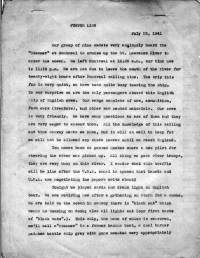 Mac died his friend Jimmy Peck inherited all of Mac's work, on Jimmy's death his Nephew, named Jim after his Uncle received all this material. Mac died his friend Jimmy Peck inherited all of Mac's work, on Jimmy's death his Nephew, named Jim after his Uncle received all this material.
What a tortured journey all this material has travelled, so easily along the way it might well have fallen into an abyss to be lost to posterity. Read the article.
|
|
|
Navy remembers Canberra (I)
|
HMA Ships Gascoyne and Huon positioned themselves over the final resting place of HMAS Canberra (I), fell silent and remembered the 84 men who lost their lives during the Battle of Savo Island. Read the article.
|
|
|
Visit to China May 8/21 2012
|
 To actually stand on the Great Wall we needed to negotiate about 15 stone steps with a large riser about 18 inches in height. This was the last hurdle, and it was suggested I might stay here. Not likely, I was not giving up at this final climb, with Denise and Jason pushing and an American tourist at the top pulling I made it, and finally I was standing on this section of this wonderful engineering feat, built here to keep out the maurading horde of Mongols. Read the article. To actually stand on the Great Wall we needed to negotiate about 15 stone steps with a large riser about 18 inches in height. This was the last hurdle, and it was suggested I might stay here. Not likely, I was not giving up at this final climb, with Denise and Jason pushing and an American tourist at the top pulling I made it, and finally I was standing on this section of this wonderful engineering feat, built here to keep out the maurading horde of Mongols. Read the article.
|
|
|
Rhonda Thomas' personal account - "Experiences of an Athenia Survivor"
|
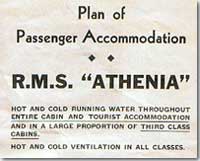 After Athenia was sunk on day one of WW2 a great deal was written about the loss and we decided to devote the Athenia Pages to the subject on our AHOY site. The latest addition is an account by Rhonda Thomas of her experiences in that ship on the day of the torpedoing. After Athenia was sunk on day one of WW2 a great deal was written about the loss and we decided to devote the Athenia Pages to the subject on our AHOY site. The latest addition is an account by Rhonda Thomas of her experiences in that ship on the day of the torpedoing.
Nothing beats the written personal account of a survivor, and this piece adds to our knowledge and understanding of a momentous event on the very first day of the start of WW2. Read the article.
|
|
|
|
Can the PM hold the fort and have any chance of winning that battle? right now Tony Abbott is poised to be our next Prime Minister in 2013. The Federal Parliamentary scene remains a fascinating study for Canberra watchers, of which I must confess I am one of them. Read the article.
|
|
|
The Fate of the Japanese Submarines which Surrendered in 1945 - The Development of Allied Policy by Derek Waller
|
The Potsdam Agreement signed by the British, Americans and Russians on 2 August 1945 sealed the fate of the majority of the Kriegsmarine U-Boats which had surrendered at the end of the European war. The result of the decisions at Potsdam was that 118 U-Boats which had surrendered on either side of the Atlantic were sunk in deep water before 15 February 1946, and that each of the three Allies was allowed to retain only 10 U-Boats for testing and experimental purposes. Additionally, the Potsdam Agreement determined the fate of four of the seven ex-U-Boats which had surrendered under the Japanese flag to the Royal Navy in Singapore and Indonesia in August 1945 at the end of the war in the Far East. Read the article.
|
|
|
Edward Francis Browne 1925 - 2011
|
Frank served as a Telegraphist in the 8 inch gunned Heavy Cruiser HMAS Shropshire, a gift to the RAN from Winston Churchill to replace her sister ship HMAS Canberra, sunk at the Battle of Savo Island on August 9, 1942.
Edward Francis Browne, you will be greatly missed. Your flag has flown high and with great distinction, We Salute You! Read the article.
|
|
|
The sinking of cruiser HMAS Sydney by disguised German raider Kormoran by David Kennedy
|
Hello,
I have been involved in researching the Sydney-Kormoran clash for some 18 years after meeting Hilfskreuzer crewmen. I was asked to testify at the two major Australian inquiries into the action -- the joint parliamentary committee (JSCFADT) in 1997-99 and Commission of Inquiry in 2008-09. I have decided to finally "go ashore" but I have put together the following as a result of my most recent research. I have the written permission of the two authors (David Stafford and Graham Freudenberg) to include their book material. I am a career journalist. I hope you may find a place for it on your site.
Regards,
David Kennedy Read the article.
|
|
|
Sir Ian Kershaw, Author
|
Sir Ian Kershaw, Professor of Modern of History at the University of Sheffield must be the Doyen amongst world writers who cover Hitler, the Nazis and Germany. Read the article.
|
|
|
The U-Boats that Surrendered, U-Boats in the Royal Navy post-May 1945 by Derek Waller
|
At the end of the war in Europe in May 1945, 156 U-Boats surrendered. Of these, 10 were allocated to each of the three Allies (UK, USA and USSR) later in the year, one was repaired and commissioned into the French Navy, four were repaired and commissioned into the Norwegian Navy, three were scrapped in the Norwegian ports in which they had surrendered, two were sunk by the US Navy in February 1946, and 116 were sunk by the Royal Navy in Operation Deadlight between November 1945 and February 1946. Read the article.
|
|
|
The U-Boats that Surrendered, Operation Deadlight By Derek Waller
|
The Royal Navy’s Operation Deadlight, which was the executive action which led to the sinking of 116 German U-Boats off Northern Ireland between 27 November 1945 and 12 February 1946, was the culmination of the long-held determination of the British Government to ensure the total elimination of the German Navy’s submarine fleet after the end of WW2. Read the article.
|
|
|
A Mobile Phone
|
When my son Raymond upgraded his mobile he passed the older one to me, but it sits in the top drawer of my filing cabinet uncharged and blissfully silent. Read the article.
|
|
|
Into The Maelstrom - The Wreck of the Rohilla by Colin Brittain
|
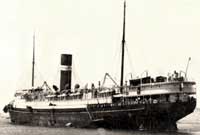 The angle at which the Rohilla was jammed on the Scar presented her broadside to the waves. Her bow had risen over the edge of the rock forcing the stern lower into the water, the sea constantly washed over the well decks and spray was thrown high above the height of the bridge. Captain Neilson ordered all hands to lifeboat stations but five unfortunate seamen were known to have been washed overboard and drowned as they made their way to posts. With twenty lifeboats there were more than enough places for those on board, provided that the boats could be launched. Read the article. The angle at which the Rohilla was jammed on the Scar presented her broadside to the waves. Her bow had risen over the edge of the rock forcing the stern lower into the water, the sea constantly washed over the well decks and spray was thrown high above the height of the bridge. Captain Neilson ordered all hands to lifeboat stations but five unfortunate seamen were known to have been washed overboard and drowned as they made their way to posts. With twenty lifeboats there were more than enough places for those on board, provided that the boats could be launched. Read the article.
|
|
|
First Use of Poison Gas In Modern Warfare
|
Of course the use of poison gas in warfare had been proscribed under the Hague Convention of 1905, and Germany as well as all the other WW1 combatants had signed it. But Germany was prepared to buck this agreement, although she had been a
signatory to it, by the end of 1915 both England and
France were
using chemical weapons as frequently as was Germany.
Read the article.
|
|
|
Royal Navy & Marine Customs and Traditions
|
The study of naval customs and traditions of 1775 to 1783, like the study of the larger body of history itself, is not an exact science, and the material stated herein is the product of much research, substantiated by at least some evidence, and the assistance of the noted authority on the subject, LTCMD A.D. Taylor, C.D., R.C.N. H.M.S. Richmond, Craig V. Fisher Read the article.
|
|
|
Field Marshal Walter von Reichenau. 1864-1942
|
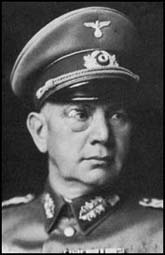 He is not easy to evaluate as an Army Commander only commanding at the highest level for some six weeks, hardly enough time to soberly judge him. He was not one of Hitler's compliant Field Marshals, but he was intelligent, ambitious and ruthless in pursuit of his career and promotion. Read the article. He is not easy to evaluate as an Army Commander only commanding at the highest level for some six weeks, hardly enough time to soberly judge him. He was not one of Hitler's compliant Field Marshals, but he was intelligent, ambitious and ruthless in pursuit of his career and promotion. Read the article.
|
|
|
PLUTO. (Pipe line under the ocean.)
|
At this distance in time, I suggest we tend to forget some of the incredible achievements associated with the 1944 landings on the west coast of France.
Pluto or the pipe line under the ocean is a case in point. Read the article.
|
|
|
Chilian Miners Rescued
|
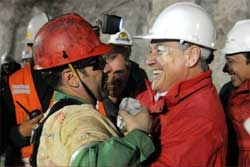
The last of the Chilean miners, the foreman who held them together when they were feared lost, was raised from the depths of the earth Wednesday night - a joyous ending to a 69-day ordeal that riveted the world. No one has ever been trapped so long and survived. In contrast to the mine collapse in Chile, The Senghennydd Colliery Disaster in Wales back in 1913 resulted in 439 miners dying.
Read the article.
|
|
|
General at Sea
|
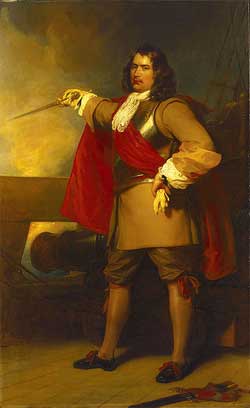 The term General usually refers to an Army rank in command of soldiers, but in the time of Oliver Cromwell, we find the term General at Sea being used for the first time. Read the article. The term General usually refers to an Army rank in command of soldiers, but in the time of Oliver Cromwell, we find the term General at Sea being used for the first time. Read the article.
|
|
|
Passenger ships lost in WW2 as a result of enemy action
|
 The world passenger ship fleet suffered the loss of 144 vessels through hostilities during in the six years of the The world passenger ship fleet suffered the loss of 144 vessels through hostilities during in the six years of the
Second World War. This was more than the entire peacetime losses for all reasons in a century. A further 30 passenger ships that were converted into naval vessels were either sunk, or retained for military duties. Over
three times as many large passenger ships were lost in World War 2 than were sunk in the four years of World War 1 Read the article.
|
|
|
|
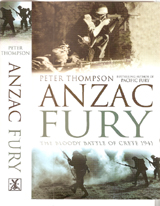 In his acknowledgements he graciously notes : " In all naval matters, I have consulted Lieutenant-Commander Mackenzie Gregory, RAN (retired) and am most grateful for his guidance." Read the article. In his acknowledgements he graciously notes : " In all naval matters, I have consulted Lieutenant-Commander Mackenzie Gregory, RAN (retired) and am most grateful for his guidance." Read the article.
|
|
|
Little workhorses, the Bathurst Class of Australian Minesweepers in WW2.
|
 The Bathursts were seen as 'maids of all work' by the RAN. The two main purposes the ships were intended for were minesweeping and anti-submarine escort. However, the corvettes found themselves performing a wide range of duties, including troop and supply transport, bombardment, assault landings support, survey and hydrography mapping, and providing aid to disabled ships. Read the article. The Bathursts were seen as 'maids of all work' by the RAN. The two main purposes the ships were intended for were minesweeping and anti-submarine escort. However, the corvettes found themselves performing a wide range of duties, including troop and supply transport, bombardment, assault landings support, survey and hydrography mapping, and providing aid to disabled ships. Read the article.
|
|
|
Silver Jubilee Review of the Fleet By King George V.At Spithead July 16, 1935
|
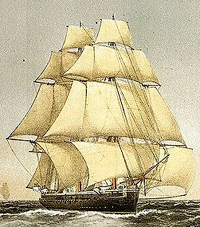 In all, some 157 ships took part, they covered the range of all types of warships. Battleships, Battle Cruisers, ( including HMS Hood, the largest warship afloat world wide, to come to an ignominious end in her fight against the German battleship BISMARCK, in 1941) Aircraft Carriers, Cruisers, Destroyers, Depot ships, Hospital ships, Minesweepers, Sloops, Submarines, Surveying ships, and Training ships. Read the article. In all, some 157 ships took part, they covered the range of all types of warships. Battleships, Battle Cruisers, ( including HMS Hood, the largest warship afloat world wide, to come to an ignominious end in her fight against the German battleship BISMARCK, in 1941) Aircraft Carriers, Cruisers, Destroyers, Depot ships, Hospital ships, Minesweepers, Sloops, Submarines, Surveying ships, and Training ships. Read the article.
|
|
|
My 88th. birthday
|
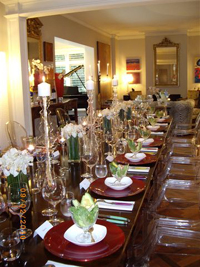 On Tuesday February 9th. 2010 it was my 88th. birthday, and we celebrated at my eldest daughter Jayne's home with a lovely dinner with my family, and 6 other friends. Read the article. On Tuesday February 9th. 2010 it was my 88th. birthday, and we celebrated at my eldest daughter Jayne's home with a lovely dinner with my family, and 6 other friends. Read the article.
|
|
|
The Battle of Quiberon Bay November 20, 1759
|
 It was during the Seven Years war between England and
France that the
Battle of Quiberon bay was fought.
At the time it appeared France was preparing to invade
both England and
Scotland, with both troops and their ship transports
massing around the
Loire estuary. Read the article. It was during the Seven Years war between England and
France that the
Battle of Quiberon bay was fought.
At the time it appeared France was preparing to invade
both England and
Scotland, with both troops and their ship transports
massing around the
Loire estuary. Read the article.
|
|
|
HMAS Canberra II finally scuttled at 1400 on Sunday 4th. October 2009
|
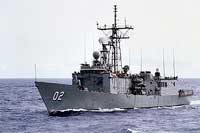 Puffs of smoke were observed to mark the firing of all the
demolition charges, the ship gracefully slipped below the
waves, no fuss, in but two minutes she was gone. Four concrete blocks will anchor her by the bow
and stern, and over the coming weeks the ex HMAS Canberra will be inspected, and I would
anticipate will be declared safe for diving. Read the article. Puffs of smoke were observed to mark the firing of all the
demolition charges, the ship gracefully slipped below the
waves, no fuss, in but two minutes she was gone. Four concrete blocks will anchor her by the bow
and stern, and over the coming weeks the ex HMAS Canberra will be inspected, and I would
anticipate will be declared safe for diving. Read the article.
|
|
|
HMAS Voyager Model by Ken Taylor
|
 Ken Taylor devoted 9 years and I imagine a large amount of his home living space to house the keel when laid, and the model as it grew to the finished wonder. It is on a large scale of 1.24, not too many modelers are that ambitious. Read the article. Ken Taylor devoted 9 years and I imagine a large amount of his home living space to house the keel when laid, and the model as it grew to the finished wonder. It is on a large scale of 1.24, not too many modelers are that ambitious. Read the article.
|
|
|
More information about Nurses in the Hospital ship Anglia: Mrs. Mitchell, Nurse Walton, Nurse Meldrum, and Nurse Rodwell
|
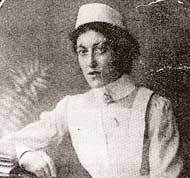 In my article, "Auxiliary Hospital Ship Anglia, mined off Folkestone on the 17th. of November 1915. 127, or 164 Dead," I had reported that only one nurse was on board, this was incorrect, and I am indebted to Hamish Hall from both the US and Canada who has kindly posted me some detail from The Nursing Times of November 17, 1915, Survivor's story of Nurses' Heroism, and In OUR ROLL OF HONOUR from The British Journal of Nursing dated December 11, 1915, Nurse Rodwell ( a relative of Hamish ) is discussed. Read the article. In my article, "Auxiliary Hospital Ship Anglia, mined off Folkestone on the 17th. of November 1915. 127, or 164 Dead," I had reported that only one nurse was on board, this was incorrect, and I am indebted to Hamish Hall from both the US and Canada who has kindly posted me some detail from The Nursing Times of November 17, 1915, Survivor's story of Nurses' Heroism, and In OUR ROLL OF HONOUR from The British Journal of Nursing dated December 11, 1915, Nurse Rodwell ( a relative of Hamish ) is discussed. Read the article.
|
|
|
Two Ships Called Canberra from the Signals Magazine
|
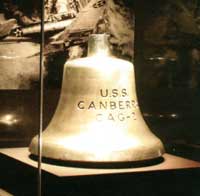 At Darling Harbour in Sydney, the Australian National Maritime Museum is located, it has a Daring class destroyer, HMAS Vampire, and HMAS Oberon, an O class submarine at its wharf. At Darling Harbour in Sydney, the Australian National Maritime Museum is located, it has a Daring class destroyer, HMAS Vampire, and HMAS Oberon, an O class submarine at its wharf.
Its quality magazine for members is named Signals, its Editor, Jeffrey Mellefont was recently in Melbourne. He called at our apartment on St Kilda Road to spend quite some time interviewing me, the end result is a 6 page feature article published in Signals Issue Number 83 for July-August 2008. I am quite flattered, and you can read his contribution here. Read the article.
|
|
|
Deserters from Great White Fleet in Melbourne September 1908
|
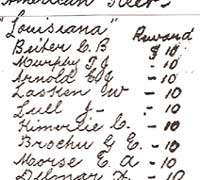 When on September 5th. 1908, 15 Battleships composing the US Great White Fleet sailed out of Melbourne, they left onshore 154 sailors from throughout the fleet, who had decided not to go back to their ships, but to stay with the girls they had met in Melbourne. How fascinating if one could but find some of the descendants from those who stayed behind in Melbourne in September 1908. Read the article. When on September 5th. 1908, 15 Battleships composing the US Great White Fleet sailed out of Melbourne, they left onshore 154 sailors from throughout the fleet, who had decided not to go back to their ships, but to stay with the girls they had met in Melbourne. How fascinating if one could but find some of the descendants from those who stayed behind in Melbourne in September 1908. Read the article.
|
|
|
Eulogy, Saturday August 9, 2008 is the 66th. anniversary of the sinking of HMAS Canberra 1
|
 Saturday August 9, 2008 is the 66th. anniversary of the sinking of HMAS Canberra 1 at the Battle of Savo Island, on the next day at the Naval Chapel on Garden Island Sydney a Memorial Service will be held, I was asked to present the eulogy, but my Melbourne speaking engagement on the Great White Fleet to the St Kilda Historical Society has precluded me from being in Sydney. Chris Johnson, the grandson of a former crew member will do it on my behalf, Read the article. Saturday August 9, 2008 is the 66th. anniversary of the sinking of HMAS Canberra 1 at the Battle of Savo Island, on the next day at the Naval Chapel on Garden Island Sydney a Memorial Service will be held, I was asked to present the eulogy, but my Melbourne speaking engagement on the Great White Fleet to the St Kilda Historical Society has precluded me from being in Sydney. Chris Johnson, the grandson of a former crew member will do it on my behalf, Read the article.
|
|
|
Contrasts day by day during WW2 in the Pacific
|
It was good to be alive, but you never knew what awaited the dawning of the next day, once again the whole ship's company awake, alert, wondering what a new day might bring, perhaps nothing, just the sheer boredom of one more day of steaming the Pacific Ocean. On the other hand it may hold a determined attack on your ship from a dedicated Kamikaze... Read the article.
|
|
|
The Wonderful County Class 8 inch Gunned Cruisers
|
 We salute the sterling service of all 13 County Class Cruisers in WW2, and out of my time at sea or overseas for all of WW2, I spent 4 and a half years in this class of heavy cruiser, and I remember them with affection, they brought me home safely, and at last it was all over. Read the article. We salute the sterling service of all 13 County Class Cruisers in WW2, and out of my time at sea or overseas for all of WW2, I spent 4 and a half years in this class of heavy cruiser, and I remember them with affection, they brought me home safely, and at last it was all over. Read the article.
|
|
|
A Brief history of Ships Bells
|
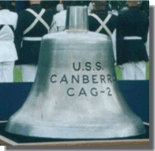 Bells have a centuries-long tradition of varied use in the navies and merchant fleets of the world. They have been used for signaling, keeping time, and providing alarm. Their functional and ceremonial uses have made them a symbol of considerable significance to the United States Navy. Read the article. Bells have a centuries-long tradition of varied use in the navies and merchant fleets of the world. They have been used for signaling, keeping time, and providing alarm. Their functional and ceremonial uses have made them a symbol of considerable significance to the United States Navy. Read the article.
|
|
|
Batons of The Duke of Wellington
|
 Absolutely amazing that the Iron Duke would be so honoured by the crowned heads of Europe, I cannot cite any other Field Marshal who managed to be awarded any Baton other than his own country's one. Read the article. Absolutely amazing that the Iron Duke would be so honoured by the crowned heads of Europe, I cannot cite any other Field Marshal who managed to be awarded any Baton other than his own country's one. Read the article.
|
|
|
Britain launches first mammoth Submarine in the Astute Class of 4 new boats
|
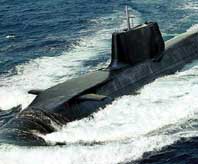 Britain launched a massive sub that can hear a ship from across the Atlantic in June 08, 2007. She is four years late and a massive $900 million over-budget. (Wonder what Total Cost is?) But when the Royal Navy's super-sub HMS Astute finally arrived, she made for an awesome sight. An incredible new submarine to break all previous records in size, equipment, armament etc. Read the article. Britain launched a massive sub that can hear a ship from across the Atlantic in June 08, 2007. She is four years late and a massive $900 million over-budget. (Wonder what Total Cost is?) But when the Royal Navy's super-sub HMS Astute finally arrived, she made for an awesome sight. An incredible new submarine to break all previous records in size, equipment, armament etc. Read the article.
|
|
|
Extracts from James Dixon's Diary, a WW1 sailor serving in HMAS Australia, flagship of the RAN
|
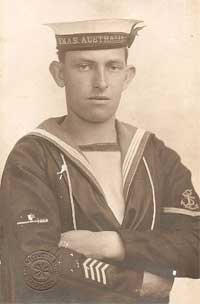 WW1 service men and women have died, and with them their stories that helped to shape our nation in its early days after Foundation of the Commonwealth of Australia on January 1st. 1901.
I strongly believe that a record such at this one from James deserves to be preserved, hence this attempt to pay tribute to a young RAN sailor who soon found himself and his ship mates serving in the unforgiving North Sea, far from home and family,with the ever dreaded coaling ship always looming close by. Read the article. WW1 service men and women have died, and with them their stories that helped to shape our nation in its early days after Foundation of the Commonwealth of Australia on January 1st. 1901.
I strongly believe that a record such at this one from James deserves to be preserved, hence this attempt to pay tribute to a young RAN sailor who soon found himself and his ship mates serving in the unforgiving North Sea, far from home and family,with the ever dreaded coaling ship always looming close by. Read the article.
|
|
|
The Pel's Fishing Owl ( Scotopelia Peli )
|
 Whilst watching a documentary about the Kalahari I was fascinated to see Sea Eagles and a bird species I was totally unaware of Pel's Fishing Owl at work catching fish. One of the world's largest Owls, can have a five foot wing span, it has the habit of fluffing up its head feathers to appear even bigger. Read the article. Whilst watching a documentary about the Kalahari I was fascinated to see Sea Eagles and a bird species I was totally unaware of Pel's Fishing Owl at work catching fish. One of the world's largest Owls, can have a five foot wing span, it has the habit of fluffing up its head feathers to appear even bigger. Read the article.
|
|
|
SS City of Launceston, a short life
|
 Within about an hour the ship collided with the incoming 500 ton ship SS Penola out of Adelaide and under the command of Captain Snewin. Penola rammed into the starboard side of the City of Launceston, her bow penetrating the Captain's cabin and water started to rush into the stricken vessel. Read the article. Within about an hour the ship collided with the incoming 500 ton ship SS Penola out of Adelaide and under the command of Captain Snewin. Penola rammed into the starboard side of the City of Launceston, her bow penetrating the Captain's cabin and water started to rush into the stricken vessel. Read the article.
|
|
|
RAN Reservists at Gallipoli, 1915
|
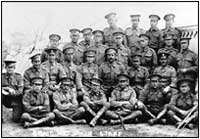 A great deal has been written about the Diggers of the AIF at Gallipoli, and the birth of the ANZAC tradition. However, very little is known about a team of Australian Naval Reservists who made up the RAN Bridging Train who spent some four months ashore at Sulva Bay, north of Anzac Cove, and who were the last to leave in the evacuation of December 1915. Even today, 92 years after this extraordinary effort at Gallipoli, the exploits of the RAN Bridging Train remain little recognised. Read the article. A great deal has been written about the Diggers of the AIF at Gallipoli, and the birth of the ANZAC tradition. However, very little is known about a team of Australian Naval Reservists who made up the RAN Bridging Train who spent some four months ashore at Sulva Bay, north of Anzac Cove, and who were the last to leave in the evacuation of December 1915. Even today, 92 years after this extraordinary effort at Gallipoli, the exploits of the RAN Bridging Train remain little recognised. Read the article.
|
|
|
HM Naval Base Portsmouth
|
 I served in Portsmouth's Naval Schools of Gunnery, Signals, and Navigation taking my Sub Lieutenant's course in 1941. Post war I was appointed to HMS Vernon at Portsmouth in 1946, as part of my courses to qualify as a Specialist Torpedo- Anti Submarine Officer. Read the article. I served in Portsmouth's Naval Schools of Gunnery, Signals, and Navigation taking my Sub Lieutenant's course in 1941. Post war I was appointed to HMS Vernon at Portsmouth in 1946, as part of my courses to qualify as a Specialist Torpedo- Anti Submarine Officer. Read the article.
|
|
|
German Field Marshal Otto Moritz Walther Model. ( 1891- 1945 )
|
 Model was the Field Marshal that Hitler always sent for when the going was really tough, his contemporaries in the Army are usually associated with a particular campaign, eg, Rommel with North Africa, and Paulus with Stalingrad, but Walther Model was used in areas that were critical to the regime. He earned the nickname of " Hitler's Fireman. " Read the article. Model was the Field Marshal that Hitler always sent for when the going was really tough, his contemporaries in the Army are usually associated with a particular campaign, eg, Rommel with North Africa, and Paulus with Stalingrad, but Walther Model was used in areas that were critical to the regime. He earned the nickname of " Hitler's Fireman. " Read the article.
|
|
|
Enemy Submarine Activity off the Australian Coast in WW2
|
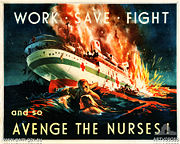 Over 30 months, 27 Japanese Submarines had been busy in Australian waters, their main thrust over 12 months between June 1942 and June 1943. 18 ships, of 86,600 tons were sunk off our east coast, and the small Mamutu in northern latitudes, another 25 ships had suffered some damage when attacked, but still survived. Read the article. Over 30 months, 27 Japanese Submarines had been busy in Australian waters, their main thrust over 12 months between June 1942 and June 1943. 18 ships, of 86,600 tons were sunk off our east coast, and the small Mamutu in northern latitudes, another 25 ships had suffered some damage when attacked, but still survived. Read the article.
|
|
|
German Aircraft Carrier Graf Zeppelin never to be commissioned
|
 By 1943 Adolf Hitler was not too interested in anything Navy, and the frustrated Raeder asked to be relieved, he was accommodated by Hitler, and Karl Donitz, the Submarine chief took charge. He was not at all interested in seeing an aircraft carrier gaining more focus than his beloved U-Boat arm, and all work stopped on Graf Zeppelin... Read the article. By 1943 Adolf Hitler was not too interested in anything Navy, and the frustrated Raeder asked to be relieved, he was accommodated by Hitler, and Karl Donitz, the Submarine chief took charge. He was not at all interested in seeing an aircraft carrier gaining more focus than his beloved U-Boat arm, and all work stopped on Graf Zeppelin... Read the article.
|
|
|
The Role of the War Correspondent
|
 War has been reported on by intrepid war correspondents for many years, over time their role has changed, some times given a free rein, at others absolutely fettered, and under strict control and censorship by Head Quarters. Over time, the role of the front line war correspondent relying on his wits, ability, and taking the same risks as the fighting man in the thick of the action, has changed dramatically, we now seek the instant report by satellite, like that provided by CNN. Read the article. War has been reported on by intrepid war correspondents for many years, over time their role has changed, some times given a free rein, at others absolutely fettered, and under strict control and censorship by Head Quarters. Over time, the role of the front line war correspondent relying on his wits, ability, and taking the same risks as the fighting man in the thick of the action, has changed dramatically, we now seek the instant report by satellite, like that provided by CNN. Read the article.
|
|
|
Field Marshal Erich von Manstein. ( 1887- 1973 )
|

Given that both his natural and step father were Generals it may well have been expected that young Erich would walk in their footsteps to serve in the Army. There can be little doubt that of all Hitler's Field Marshals, Erich Manstein was the best and most brilliant. Read the article.
|
|
|
Wolf Packs slaughter ships in Convoys SC-7 and HX-79, in October 1940
|
 This became one of the most famous Wolf Pack attacks between the nights of October 16th to the 19th, 1940. Convoy SC7 was repeatedly attacked by a pack of seven boats, sinking 20 ships out of 34 in the convoy. The very next night, convoy HX79 was attacked with further losses of 13 ships, making a total of 33 ships in 48 hours. These attacks mounted against the two convoys came to be known as “The Night of the Long Knives”. Read the article. This became one of the most famous Wolf Pack attacks between the nights of October 16th to the 19th, 1940. Convoy SC7 was repeatedly attacked by a pack of seven boats, sinking 20 ships out of 34 in the convoy. The very next night, convoy HX79 was attacked with further losses of 13 ships, making a total of 33 ships in 48 hours. These attacks mounted against the two convoys came to be known as “The Night of the Long Knives”. Read the article.
|
|
|
The Liberty Bell
|
 "Proclaim liberty throughout all the land unto all the inhabitants thereof - Lev. XXV, v. x. By order of the Assembly of the Province of Pensylvania [sic] for the State House in Philada." Read the article. "Proclaim liberty throughout all the land unto all the inhabitants thereof - Lev. XXV, v. x. By order of the Assembly of the Province of Pensylvania [sic] for the State House in Philada." Read the article.
|
|
|
Luftwaffe attack their own Destroyers on February 22nd. 1940
|
The aircraft now returned machine gun fire, seemingly assuring all the ships it was an enemy plane. But Max Schulz reported this aircraft was in fact friendly, one of her lookouts had spotted a German Cross on a wing, but no one else wanted to accept that report, especially after that 1st. exchange of gunfire.
Read the article.
|
|
|
Operation Pastorious. German Saboteurs came by night in June of 1942
|
 Adolf Hitler ordered the school to train agents whose task would be to infiltrate into the United States of America to destroy vital power plants, factories, and communications. Eight men were chosen, two naturalised citizens of the US, and six Germans who had at one time lived in the US. This group were given a crash course in the art of sabotage at Quentz Farm. Read the article. Adolf Hitler ordered the school to train agents whose task would be to infiltrate into the United States of America to destroy vital power plants, factories, and communications. Eight men were chosen, two naturalised citizens of the US, and six Germans who had at one time lived in the US. This group were given a crash course in the art of sabotage at Quentz Farm. Read the article.
|
|
|
Saved by Walter Schmietenknop
|
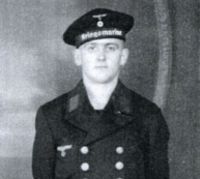 U-767 was detected by the British Support Group 14. Fame attacked. She reported 2-3 hits at 95 feet, and U-767 was doomed, sinking in 240 feet of water. U-767 was detected by the British Support Group 14. Fame attacked. She reported 2-3 hits at 95 feet, and U-767 was doomed, sinking in 240 feet of water.
Only one crew member from her complement of 50 escaped, and this was Walter Schmietenknop. He was picked up by HMS Fame and now tells his remarkable story, "Saved."
Read the article.
|
|
|
Athenia Manuscript authored by Judith Evelyn
|
Judith's Manuscript ( tied up with ribbon ) covered her sailing, being sunk, and rescued from the liner Athenia, in the first casualty of the WW2 U-Boat war in the Atlantic. The ship was sunk by U-30 on Sunday the 3rd.of September 1939 the very first day that WW2 had been declared.
93 passengers and 19 crew members died. Read the article.
|
|
|
Spitfires over Edinburgh in WW2
|
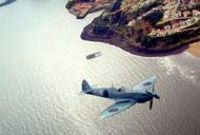 603 pilots flying the famous Spitfire Fighter, aided by their brothers in arms from Glasgow's 602 Squadron shot down three of the enemy aircraft. The Dornier 111 which crashed in East Lothia was the first German aircraft to be destroyed over Britain in WW2. A fourth bomber was accounted for by AA fire near North 603 pilots flying the famous Spitfire Fighter, aided by their brothers in arms from Glasgow's 602 Squadron shot down three of the enemy aircraft. The Dornier 111 which crashed in East Lothia was the first German aircraft to be destroyed over Britain in WW2. A fourth bomber was accounted for by AA fire near North
Queensferry in Fife. Read the article.
|
|
|
Index to Naval Operations articles on Ahoy
|
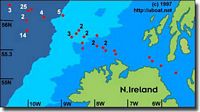 So that our readers who may be interested in articles on AHOY that covered a number of actions in WW2, and were prefaced by the term " Operations" in their title, and to make it simpler to access them, we have decided to consolidate this group under the heading: OPERATIONS PAGES, in the index on the left hand side of our Home Page. Read the article. So that our readers who may be interested in articles on AHOY that covered a number of actions in WW2, and were prefaced by the term " Operations" in their title, and to make it simpler to access them, we have decided to consolidate this group under the heading: OPERATIONS PAGES, in the index on the left hand side of our Home Page. Read the article.
|
|
|
Shot at Dawn, WW1 Army Executions
|
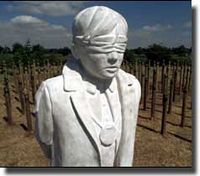 We now live in totally different times in 2006, back during WW1 it was deemed necessary to shoot 306 so called deserters or men showing cowardice to Make an example of them, no doubt to deter many others from following their example. Read the article. We now live in totally different times in 2006, back during WW1 it was deemed necessary to shoot 306 so called deserters or men showing cowardice to Make an example of them, no doubt to deter many others from following their example. Read the article.
|
|
|
Only one Australian Serviceman is buried at Arlington National Cemetery
|
Pilot Officer Milne died on a World War II air mission on November 26, 1942. He was a member of a multinational flight crew whose remains were discovered in New Guinea in 1989. Since his remains, and those of the United States Army Air Corps Technical Sergeant (Joseph E. Paul), were individually unidentifiable, they were buried together in the same casket, in grave 4754, Section 34, Arlington National Cemetery. Read the article.
|
|
|
Shropshire Room Commissioned at HMAS Kuttabul
|
 On Wednesday 5 July 2006 at 1030, the name Shropshire was “recommissioned” into the RAN, although this time not as a capital ship, nor even in a sea going capacity. The Shropshire Room was named in a ceremony at Maritime Command Headquarters within the grounds of HMAS Kuttabul at Potts Point in Sydney, continuing a name that served the RAN so well in WW2 and beyond. Read the article. On Wednesday 5 July 2006 at 1030, the name Shropshire was “recommissioned” into the RAN, although this time not as a capital ship, nor even in a sea going capacity. The Shropshire Room was named in a ceremony at Maritime Command Headquarters within the grounds of HMAS Kuttabul at Potts Point in Sydney, continuing a name that served the RAN so well in WW2 and beyond. Read the article.
|
|
|
Adolf Hitler and his WW2 Field Marshals
|
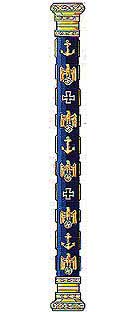 Work in progress Work in progress
This article will cover 27 German Officers, 19 Army, 6 Luftwaffe, and 2 Navy. They will appear in alphabetical order, Army, Luftwaffe and Navy, selected in that way because of the number of Officers in each arm of the Service. Read the article.
|
|
|
I Like the Navy
|
I LIKE standing on the bridge wing at sunrise with salt spray in my face and clean ocean winds whipping in from the four quarters of the globe, the ship beneath me feeling like a living thing as her engines drive her through the sea.
Anon. R.A.N. (Retired) Read the article.
|
|
|
Duke of Edinburgh in command of HMS Galatea, visits Australia for the first Royal Tour, in 1867
|
 This tour was to last for five months, visiting Adelaide, Melbourne, Sydney, Brisbane, and Tasmania. In Victoria, a special Royal train was made up for the occasion, and the Duke travelled in it to provincial towns such as Bendigo, Geelong, and Ballarat. Read the article. This tour was to last for five months, visiting Adelaide, Melbourne, Sydney, Brisbane, and Tasmania. In Victoria, a special Royal train was made up for the occasion, and the Duke travelled in it to provincial towns such as Bendigo, Geelong, and Ballarat. Read the article.
|
|
|
Arthur John Curtin, 1918-2006
|
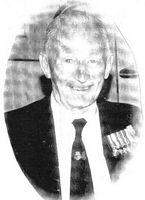 Today, Friday the 30th. of June 2006, I was invited to speak at the funeral service for Arthur Curtin, he served with me in both Canberra and Shropshire, and served for many years on my Committee of HMAS Canberra/ HMAS Shropshire Association. Read the article. Today, Friday the 30th. of June 2006, I was invited to speak at the funeral service for Arthur Curtin, he served with me in both Canberra and Shropshire, and served for many years on my Committee of HMAS Canberra/ HMAS Shropshire Association. Read the article.
|
|
|
Declarations of War in WW2
|
I am in total agreement about History being neglected as a subject to be taught in our schools today, but do feel there is a burgeoning interest awakening in our children today to learn about their forebears and the part they may have played in WW2. Read the article.
|
|
|
Belgian Trooper SS Leopoldville, sunk by U-486. Christmas eve 1944, and 783 US troops die
|
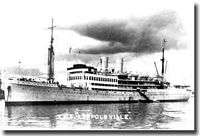 About 2030 ( 8. 30 PM ) two explosions from deep within Leopoldville were heard, and the ship heeled sideways, and sank by the stern. Many of the troops were swept into the cold, rough waters off Cherbourg, the soldiers wearing heavy overcoats and equipment were soon in trouble, and many drowned. 1,400 infantrymen were saved, but 783 had lost their lives, the greatest loss suffered by US
servicemen at sea, all at the hands of an enemy submarine. Read the article. About 2030 ( 8. 30 PM ) two explosions from deep within Leopoldville were heard, and the ship heeled sideways, and sank by the stern. Many of the troops were swept into the cold, rough waters off Cherbourg, the soldiers wearing heavy overcoats and equipment were soon in trouble, and many drowned. 1,400 infantrymen were saved, but 783 had lost their lives, the greatest loss suffered by US
servicemen at sea, all at the hands of an enemy submarine. Read the article.
|
|
|
Meet Mac news paper article
|
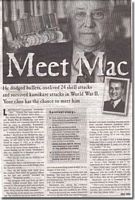 This interview featured in the Melbourne morning paper The Herald Sun dated today, Tuesday the 11th. of April 2006, Anzac Day is on the 25th, and the paper is wanting to involve schools in a competition to promote that day. Read the article. This interview featured in the Melbourne morning paper The Herald Sun dated today, Tuesday the 11th. of April 2006, Anzac Day is on the 25th, and the paper is wanting to involve schools in a competition to promote that day. Read the article.
|
|
|
Memorials of Melbourne
|
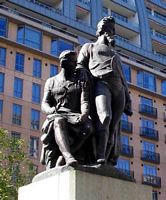 The City of Melbourne has the good fortune to be endowed with some of the finest parks and gardens that may be found world wide. Within them, and in other locations close to the city, may be found a series of memorials to ex service men, and women, or to individuals who have served Australia as explorers, a navigator, sporting identities, or citizens in both peace or in war. Read the article. The City of Melbourne has the good fortune to be endowed with some of the finest parks and gardens that may be found world wide. Within them, and in other locations close to the city, may be found a series of memorials to ex service men, and women, or to individuals who have served Australia as explorers, a navigator, sporting identities, or citizens in both peace or in war. Read the article.
|
|
|
The Mining of HM Ships Neptune and Kandahar. 19th./20th. December. 1941
|
 On the 18th. of December 1941, Force K sailed out of Malta to intercept an enemy convoy making for Tripoli. Neptune, Aurora, and Penelope steaming in line ahead with Kandahar, Lance, Lively and Havock in support, were on a southerly course on a dark, stormy night, when at 0106 ( 1. 06 AM ) early on the 19th. of December, Neptune ran slap bang into a mine. Read the article. On the 18th. of December 1941, Force K sailed out of Malta to intercept an enemy convoy making for Tripoli. Neptune, Aurora, and Penelope steaming in line ahead with Kandahar, Lance, Lively and Havock in support, were on a southerly course on a dark, stormy night, when at 0106 ( 1. 06 AM ) early on the 19th. of December, Neptune ran slap bang into a mine. Read the article.
|
|
|
The British Convoy System in Two World Wars, and winning the Battle of the Atlantic
|
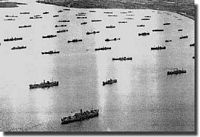 Hitler on 9 October, 1939, made this comment, "Used ruthlessly, the Submarine, can today, be an extraordinary threat to Britain." Hitler on 9 October, 1939, made this comment, "Used ruthlessly, the Submarine, can today, be an extraordinary threat to Britain."
Churchill said, " Battles might be won or lost, enterprises succeed or miscarry, Territories might be gained or quitted, but, dominating all our power to carry on the war, or even keep ourselves alive, was our mastery of the ocean routes, and free approach and entry to our ports. The only thing that ever frightened me during the war was the U-Boat peril." Read the article.
|
|
|
Allied Armed Merchant Cruisers of WW2
|
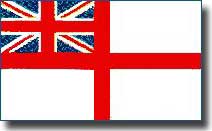 As in WW1, the Royal Navy again in WW2, to augment its Naval ships made use of selected Merchant ships by converting them to Armed Merchant Cruisers. These vessels ranged from 6,000 to 22,000 tons, and were fitted out, usually with old WW1 type 6 inch guns, complemented with a meagre and totally inadequate Anti-aircraft armament. Given the title of His Majesty's Ship, and a White Ensign to fly these ships were in general, used for convoy escort work, and proved to be no match for any encounter with modern German capital ships. Read the article. As in WW1, the Royal Navy again in WW2, to augment its Naval ships made use of selected Merchant ships by converting them to Armed Merchant Cruisers. These vessels ranged from 6,000 to 22,000 tons, and were fitted out, usually with old WW1 type 6 inch guns, complemented with a meagre and totally inadequate Anti-aircraft armament. Given the title of His Majesty's Ship, and a White Ensign to fly these ships were in general, used for convoy escort work, and proved to be no match for any encounter with modern German capital ships. Read the article.
|
|
|
Russia versus Japan. The Battle of Tsushuma Straits, 1905
|
 The Torpedo Boats approached with stealth to find the cruiser Pallada very conveniently illuminating the scene with her searchlights. The Russian ships were silhouetted nicely, like sitting ducks awaiting their fate. In two groups of five, the Japanese Boats unleashed their deadly torpedoes, to then escape seawards. Read the article. The Torpedo Boats approached with stealth to find the cruiser Pallada very conveniently illuminating the scene with her searchlights. The Russian ships were silhouetted nicely, like sitting ducks awaiting their fate. In two groups of five, the Japanese Boats unleashed their deadly torpedoes, to then escape seawards. Read the article.
|
|
|
HMAS Shropshire takes her final Voyage
|
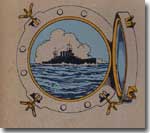 Swarms of the wrecking gang soon removed all the valuable material within the ship's hull, her remains towed down stream to Troon, and after beaching there, the blow torches nibbled away to turn the remains into smelter furnace feedstock so that new steel might emanate from this old carcass. Read the article. Swarms of the wrecking gang soon removed all the valuable material within the ship's hull, her remains towed down stream to Troon, and after beaching there, the blow torches nibbled away to turn the remains into smelter furnace feedstock so that new steel might emanate from this old carcass. Read the article.
|
|
|
And So To Tokyo
|
A lecture at the Shrine of Remembrance Melbourne by Lieutenant Commander Mackenzie Gregory RAN R'td. on Tuesday the 22nd. of November 2005. Read the article.
|
|
|
The new British Magazine WW11, A Brief Review
|
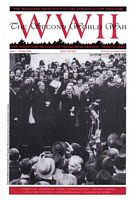 If you have been watching your mailbox for the first issue of the new British Magazine WW 11, from Great Northern Publishing, the gestation period is over, IT HAS BEEN BORN. If you have been watching your mailbox for the first issue of the new British Magazine WW 11, from Great Northern Publishing, the gestation period is over, IT HAS BEEN BORN.
You will not be disappointed, the cover carries the famous photograph of British Prime Minister, Neville Chamberlain, on his return from being fooled by Hitler, and brandishing his piece of paper to declare " Peace In Our Time." Read the article.
|
|
|
The Birthday of Captain Arthur Phillip Royal Navy. 11th. of October 2005
|
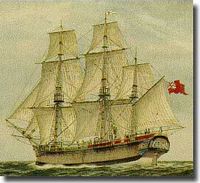 The text of a presentation I made last night to the Australia Day Council members in Melbourne. The text of a presentation I made last night to the Australia Day Council members in Melbourne.
"It was on the 13th. of May in 1787 that Captain Arthur Phillip in Sirius, in the company of the tiny 170 ton King's ship Supply, the transports, Alexander, Lady Penrhyn, Charlotte, Scarborough, Friendship and Prince of Wales, the Store ships Fishburn, Golden Fleece and Borrowdale, led the First Fleet from Portsmouth out to sea, they were on their way at last into the unknown to Botany Bay 12,000 miles distant." Read the article.
|
|
|
Gravestone of the “Sea Devil” Count Felix Luckner
|
The gravestone on the grave of the “sea devil” Count Felix Luckner is found only a few paces away from the bust on the grave of the actor Harry Gorki. His ship, the “S.M. Hilfskreuzer Seeadler” (or “S.M. secondary/assistant cruiser Sea Eagle”) is depicted in the upper part of the gravestone. Unfortunately, due to the moss that has grown on the stone tablet, the ship is very difficult to see and the gravestone is rather unnoticeable (March 2003). Much has been written about the well-known sea hero of the first world war. Read the article.
|
|
|
Navy Week Exhibition.2005. Shrine of Remembrance. Melbourne.
|
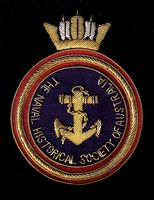 In this 60th Anniversary year of victory in Europe and victory in the Pacific, the Naval Historical Society of Australia - Victoria Chapter, is proud to conduct an exhibition of photographic reproductions of paintings and black and white images from various sources, to be held in the Visitors Centre at The Shrine of Remembrance. We thank Veterans Affairs in Canada, The United States Navy - Historical Section, and the Australian War Memorial for making these available. Read the article. In this 60th Anniversary year of victory in Europe and victory in the Pacific, the Naval Historical Society of Australia - Victoria Chapter, is proud to conduct an exhibition of photographic reproductions of paintings and black and white images from various sources, to be held in the Visitors Centre at The Shrine of Remembrance. We thank Veterans Affairs in Canada, The United States Navy - Historical Section, and the Australian War Memorial for making these available. Read the article.
|
|
|
Russian Sailors Rescued from Trapped AS-28 Mini Submarine
|
 Great news! the seven man crew from the trapped Russian Mini-Submarine have all been rescued. A British Remote Control Vehicle cut away the under water cable snagging the submarine to release it, and allow it to surface. The crew were able to open the deck hatch to all emerge safely. They have now been taken to the mainland and went off to hospital for medical check ups after their ordeal. Read the article. Great news! the seven man crew from the trapped Russian Mini-Submarine have all been rescued. A British Remote Control Vehicle cut away the under water cable snagging the submarine to release it, and allow it to surface. The crew were able to open the deck hatch to all emerge safely. They have now been taken to the mainland and went off to hospital for medical check ups after their ordeal. Read the article.
|
|
|
The World of the Container Ship
|
 The advent of the container ship, and the fact that they will get even larger, has sounded the death knell for the cargo vessel that tramped round the world. The bulk of goods carried between continents will be shipped in the standard 20 foot container, that will protect the contents largely from pilferage, which was rife at ports in the past, and delivery will be faster and cheaper than under the old method. Coastal trade around specific countries will still rely on the smaller cargo ship to fulfil local shipping needs. Read the article. The advent of the container ship, and the fact that they will get even larger, has sounded the death knell for the cargo vessel that tramped round the world. The bulk of goods carried between continents will be shipped in the standard 20 foot container, that will protect the contents largely from pilferage, which was rife at ports in the past, and delivery will be faster and cheaper than under the old method. Coastal trade around specific countries will still rely on the smaller cargo ship to fulfil local shipping needs. Read the article.
|
|
|
The Mighty Mo. USS Missouri. ( BB 63 ) A Brief History
|
 On Friday the 2nd. of September 2005, the USS Missouri Memorial Association will host an historic event, the celebration of the 60th. Anniversary of signing the Japanese Surrender on the deck of USS Missouri in Tokyo Bay with General Douglas MacArthur orchestrating the ceremony. My wife Denise, and myself have been delighted to receive an invitation from the USS Missouri Memorial Association to attend that day. As I was present in Tokyo Bay back in September 1945, the ring will finally have gone full circle to be closed on that morning. Read the article. On Friday the 2nd. of September 2005, the USS Missouri Memorial Association will host an historic event, the celebration of the 60th. Anniversary of signing the Japanese Surrender on the deck of USS Missouri in Tokyo Bay with General Douglas MacArthur orchestrating the ceremony. My wife Denise, and myself have been delighted to receive an invitation from the USS Missouri Memorial Association to attend that day. As I was present in Tokyo Bay back in September 1945, the ring will finally have gone full circle to be closed on that morning. Read the article.
|
|
|
"Cammell Laird: Shipbuilders to the World" at Birkenhead, England by Alex Naughton
|
Cammell Laird built its first vessel at Birkenhead as long ago as 1828. The company has not built a new vessel at Birkenhead since 1993 and recently plans have been put forward for the redevelopment of the Cammell Laird shipyard site. Ship repair and conversion work continues to expand at Birkenhead under the A&P Group but given the general state of the British shipbuilding industry it seems unlikely that shipbuilding will ever return to the legendary Cammell Laird shipyard at Birkenhead. It seems that this chapter in the yard’s history has now closed forever.
Content © Alex Naughton (2003-2005) who publishes "RMS Windsor Castle, 1960 - 2005" Used with permission. Read the article.
|
|
|
Index to Naval Battles on AHOY
|
 Our Web Site AHOY carries a slew of articles recording many of these Naval Sea Battles, and it has been decided to provide a chronological index of these pieces to assist any of our readers interested in viewing any of these stories. Read the article. Our Web Site AHOY carries a slew of articles recording many of these Naval Sea Battles, and it has been decided to provide a chronological index of these pieces to assist any of our readers interested in viewing any of these stories. Read the article.
|
|
|
The Battle for Okinawa. Invaded 1st. of April 1945
|
 Here, Japanese Kamikaze Aircraft held command, they killed almost 5,000 Navy personnel, the greatest number to die in a single Pacific Battle. 34 Allied ships sunk, another 368 damaged, in the main, at the hands of the deadly Kamikaze. It was the last, and bloodiest battle of the whole war in the Pacific. Here, Japanese Kamikaze Aircraft held command, they killed almost 5,000 Navy personnel, the greatest number to die in a single Pacific Battle. 34 Allied ships sunk, another 368 damaged, in the main, at the hands of the deadly Kamikaze. It was the last, and bloodiest battle of the whole war in the Pacific.
Read the article.
|
|
|
Bloody Iwo Jima. A 36 day Battle for supremacy in February 1945
|
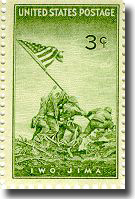 At 0200 ( 2 ) on the 19th. of February 1945, the Naval bombardment commenced, this was the traditional start to any sea ward landing made on a Japanese held position in the Pacific war. The United States Navy, sometimes with several cruisers from the Royal Australian Navy, stood off the beaches, soon to be swarming with landing craft filled with Marines, and pounded the area with high explosive shells from the battleships, heavy and light cruisers, devasting all in the path of this rolling smoke and thunder barrage. Read the article. At 0200 ( 2 ) on the 19th. of February 1945, the Naval bombardment commenced, this was the traditional start to any sea ward landing made on a Japanese held position in the Pacific war. The United States Navy, sometimes with several cruisers from the Royal Australian Navy, stood off the beaches, soon to be swarming with landing craft filled with Marines, and pounded the area with high explosive shells from the battleships, heavy and light cruisers, devasting all in the path of this rolling smoke and thunder barrage. Read the article.
|
|
|
Australia's Merchant Marine in Peace and War
|
 Some 60 different Shipping Companies have owned and operated Australian ships over the long period from the 1880's to the 1950's. Some were but small companies and maybe operated just one vessel for their own purposes, but in the main, ships carried both passengers and cargo from port to port on the Australian coast.
Sadly today, the Australian Merchant Fleet has but something like 45 ships operating on our vast coastline. Read the article. Some 60 different Shipping Companies have owned and operated Australian ships over the long period from the 1880's to the 1950's. Some were but small companies and maybe operated just one vessel for their own purposes, but in the main, ships carried both passengers and cargo from port to port on the Australian coast.
Sadly today, the Australian Merchant Fleet has but something like 45 ships operating on our vast coastline. Read the article.
|
|
|
Seven Clemson Class Destroyers all wrecked at Honda Point on the 8th. of September 1923
|
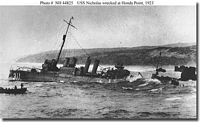 In the worst peacetime disaster in the history of the United States Navy, on the evening of the 8th. of September 1923, 14 Destroyers from Squadron Eleven, led by Captain Edward Watson USN, were making for San Diego from San Fransisco. At 2100, believing they were steaming east into Santa Barbara Channel, the flagship led his Squadron at 20 knots slap bang into the rocks and shoreline at Honda Point. Seven of his ships were wrecked, and 23 sailors died. Read the article. In the worst peacetime disaster in the history of the United States Navy, on the evening of the 8th. of September 1923, 14 Destroyers from Squadron Eleven, led by Captain Edward Watson USN, were making for San Diego from San Fransisco. At 2100, believing they were steaming east into Santa Barbara Channel, the flagship led his Squadron at 20 knots slap bang into the rocks and shoreline at Honda Point. Seven of his ships were wrecked, and 23 sailors died. Read the article.
|
|
|
Any old Iron? Canada wants to get rid of old Oberon Class Submarines.
|
The Canadian Navy has some very old Oberon Class Submarines, not much more than Old Iron, at this stage of their life, that they would like to dispose of. But you should give up any ideas of being Captain of your own O Class Boat standing watch on her conning tower at sea.
They appear to be beyond recovery to allow them to sail once more in the proud way they served in the Canadian Navy over 40 years ago. Read the article.
|
|
|
Interview about the WW1 German Armed Merchant Raider, Moewe
|
I had an interesting E-Mail from Belfast, Northern Ireland yesterday asking if I would take a phone call from there at 1200 GMT Tuesday, the 24th. of May 2005, ie at 9 PM Australian time, as they are on summer time there, and now 9 hours behind Melbourne, and record an interview about the WW1 German Armed Merchant Raider, Moewe, I agreed, and it took place this evening. Read the article.
|
|
|
Ships of the Royal Australian Navy during WW2
|
 The accompanying diagram depicts the Ships of the RAN in WW2, for a meagre populated country at that time it was a remarkable achievement, over 200 vessels in all, which included 56 Bathurst Class Corvettes / Minesweepers all built around Australia and named after the country towns found in each State of the Commonwealth. I am indebted to John Date for this drawing. Read the article. The accompanying diagram depicts the Ships of the RAN in WW2, for a meagre populated country at that time it was a remarkable achievement, over 200 vessels in all, which included 56 Bathurst Class Corvettes / Minesweepers all built around Australia and named after the country towns found in each State of the Commonwealth. I am indebted to John Date for this drawing. Read the article.
|
|
|
Wreck of HMHS Rewa, identified by Divers in 2004
|
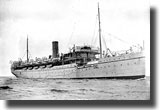 The wreck of Rewa was discovered by divers in September of 2003, lying upright in about 60 metres of water some 33 miles from Newquay off the Northern coast of Cornwall. She had been torpedoed by Wilhelm Werner in his U-55 on the 4th. of January 1918, the ship loaded with cot cases and walking wounded from Greece, and at the fag end of her voyage via Malta bound for Cardiff. Read the article. The wreck of Rewa was discovered by divers in September of 2003, lying upright in about 60 metres of water some 33 miles from Newquay off the Northern coast of Cornwall. She had been torpedoed by Wilhelm Werner in his U-55 on the 4th. of January 1918, the ship loaded with cot cases and walking wounded from Greece, and at the fag end of her voyage via Malta bound for Cardiff. Read the article.
|
|
|
Australian Army Slouch Hat
|
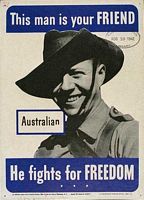 The slouch hat made its first appearance overseas on the heads of troops fighting in the Boer War, and it added much to the mystique of the Australian bushmen. Around the time the first Commonwealth troops arrived in South Africa, the hat began to be more commonly worn with the left side turned up, so that a rifle or one fitted with a bayonet would not interfere with the head gear. Read the article. The slouch hat made its first appearance overseas on the heads of troops fighting in the Boer War, and it added much to the mystique of the Australian bushmen. Around the time the first Commonwealth troops arrived in South Africa, the hat began to be more commonly worn with the left side turned up, so that a rifle or one fitted with a bayonet would not interfere with the head gear. Read the article.
|
|
|
Our Language
|
Many and varied can be the meanings of our everyday use of some words. So, will our readers please share with Terry and myself some of the contranyms that are your favourites? and we will publish a list on AHOY. Read the article.
|
|
|
The use of Propaganda Posters in WW2
|
 In World War 2 propaganda took many forms, but one that was employed by all the nations at war was that of the Propaganda Poster.
A review of some of these posters is quite revealing, and Northwestern University in the United States has gathered a large collection in their library archives, all of which are in the public domain.
Here I have selected a group of them which give a good feel of what is available, in addition, a few posters from Britain, Germany, Russia, Japan and Italy have also been added to show their style and flavour. Read the article. In World War 2 propaganda took many forms, but one that was employed by all the nations at war was that of the Propaganda Poster.
A review of some of these posters is quite revealing, and Northwestern University in the United States has gathered a large collection in their library archives, all of which are in the public domain.
Here I have selected a group of them which give a good feel of what is available, in addition, a few posters from Britain, Germany, Russia, Japan and Italy have also been added to show their style and flavour. Read the article.
|
|
|
8th. of May 2005, 60 years on since VE Day in Europe
|
 Today, Sunday the 8th. of May 2005 is the 60th. anniversary of VE Day in Europe which signalled the end of WW2 in that part of the world. It seems hard to believe we have reached that milestone, it has all gone so quickly, but in Australia, at that time, although we were pleased one phase of the war was over, for us, we still had the job in front of us to finally defeat the Japanese war machine in the Pacific. Read the article. Today, Sunday the 8th. of May 2005 is the 60th. anniversary of VE Day in Europe which signalled the end of WW2 in that part of the world. It seems hard to believe we have reached that milestone, it has all gone so quickly, but in Australia, at that time, although we were pleased one phase of the war was over, for us, we still had the job in front of us to finally defeat the Japanese war machine in the Pacific. Read the article.
|
|
|
The U-Boats versus The Convoys. Battle of the Atlantic. September 1939 - May 1945. Index to Ahoy Articles
|
 "When you think how easy it is to sink ships at sea, and how hard it is to build them, and when you realise that we never had less than 2000 ships afloat, and 300 to 400 in the danger zone, and of the great Armies we are nuturing,and reinforcing in the East, and of the world wide traffic we have to carry on, when you think of all this, can you wonder that it is the Battle of the Atlantic which holds the first place in the thoughts of those upon whom the responsibility for final Victory rests. - Winston Churchill "When you think how easy it is to sink ships at sea, and how hard it is to build them, and when you realise that we never had less than 2000 ships afloat, and 300 to 400 in the danger zone, and of the great Armies we are nuturing,and reinforcing in the East, and of the world wide traffic we have to carry on, when you think of all this, can you wonder that it is the Battle of the Atlantic which holds the first place in the thoughts of those upon whom the responsibility for final Victory rests. - Winston Churchill
These articles make up a good cross section of the struggles of those days. Read the article.
|
|
|
Women Pioneers of Australian Aviation
|
 During the early years of the 20th. Century, and into the thirties, a handful of intrepid women defied the convention of being Mothers and Homemakers, by thumbing their noses at the norm as they took to the skies. They blazed new trails to and from England and Australia, and within the land Down Under. We review some of their achievements as they broke records in the field of Aviation. Read the article. During the early years of the 20th. Century, and into the thirties, a handful of intrepid women defied the convention of being Mothers and Homemakers, by thumbing their noses at the norm as they took to the skies. They blazed new trails to and from England and Australia, and within the land Down Under. We review some of their achievements as they broke records in the field of Aviation. Read the article.
|
|
|
We Remember. Bob Quinn, a Scottish friend, a contributor to AHOY, who died suddenly on the 24th. of February 2005
|
 At my first contact with Bob, he was 80, legally blind, but had recently discovered the computer, and was willing to share his time in Australia etc with the Welfreigher Project. Over the ensuing period we quickly developed a close relationship, our mutual wartime Naval Service providing a strong bond, we talked via E-Mails almost daily. I felt I had known this strong character for a long long time, and he became a dear friend. Read the article. At my first contact with Bob, he was 80, legally blind, but had recently discovered the computer, and was willing to share his time in Australia etc with the Welfreigher Project. Over the ensuing period we quickly developed a close relationship, our mutual wartime Naval Service providing a strong bond, we talked via E-Mails almost daily. I felt I had known this strong character for a long long time, and he became a dear friend. Read the article.
|
|
|
Japanese Submarine I-401 found off Hawaii
|
 During WW2, Japan laid down the I-400 class of Submarine, they were huge boats, 400 feet long, of 3,530 tons, on deck a large 115 foot long by 12 feet in diameter hangar, designed to carry three aircraft with folding wings and tail. On Sunday the 20th. of March 2005 details of a research team from the University of Hawaii finding the wreck of WW2 Japanese Submarine I-401 were released. On St Patrick's day, the 17th. of March, during test dives off Oahu, a wreck was found. Read the article. During WW2, Japan laid down the I-400 class of Submarine, they were huge boats, 400 feet long, of 3,530 tons, on deck a large 115 foot long by 12 feet in diameter hangar, designed to carry three aircraft with folding wings and tail. On Sunday the 20th. of March 2005 details of a research team from the University of Hawaii finding the wreck of WW2 Japanese Submarine I-401 were released. On St Patrick's day, the 17th. of March, during test dives off Oahu, a wreck was found. Read the article.
|
|
|
Fore Top sail from HMS Victory to be on display
|
 A 3,618 square foot top sail that served HMS Victory at the battle of Trafalgar will be on display at the Portsmouth Historic Dockyard to mark the 200th. anniversary of this historic battle. It was stitched together in the Chatam sail loft in 1803, staying on board Victory after Trafalgar, until Nelson's flagship came home for repairs in 1806. Read the article. A 3,618 square foot top sail that served HMS Victory at the battle of Trafalgar will be on display at the Portsmouth Historic Dockyard to mark the 200th. anniversary of this historic battle. It was stitched together in the Chatam sail loft in 1803, staying on board Victory after Trafalgar, until Nelson's flagship came home for repairs in 1806. Read the article.
|
|
|
Death at Sea in World War 2.
|
 Blame could hardly be laid at the door of Allied Submarine Captains, who were not to know the cargo carried in these ships. It was rather that the Japanese authorities were culpable in not marking their ships with the safety of a Red Cross to indicate that POW's were on board. Read the article. Blame could hardly be laid at the door of Allied Submarine Captains, who were not to know the cargo carried in these ships. It was rather that the Japanese authorities were culpable in not marking their ships with the safety of a Red Cross to indicate that POW's were on board. Read the article.
|
|
|
New Discussion Forum for AHOY
|
At the top of each page is a link to this new feature, and you are invited to "Come on over."
Just set a topic for discussion about some aspect of Naval or Maritime History, add it to our Discussion Forum page, sit back and see what comes our way. You may be the first to set the ball rolling, take up the challenge. Terry and I await with interest to see what type of subject gets people going and wound up, so GO To IT, please!
Mac Gregory, and Web Master, Terry Kearns Read the article.
|
|
|
British Hospital Ships, Torpedoed or Mined in WW1
|
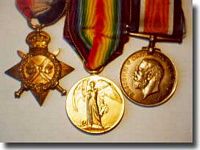
Over WW1, a number of British Hospital ships were sunk either by means of torpedoes or mines. In the period of 1917/1918, when unrestricted warfare was waged on Allied shipping by the German U-Boat arm, it appeared to be a specific policy to target British Hospital ships for destruction.
Read the article.
|
|
|
Tid-bits from the book, Cruise of the Sea Eagle, by Blaine Pardoe
|
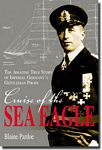 A few things have been brought to the surface as a result of access to archival resources around the world, adding to what we know about Count von Luckner and the Seeadler. Thanks to declassified US Navy material in the US National Archives, the resources of the New Zealand National Archives, the National Archives of the United Kingdom, the Bundersarchiv/Militararchiv and Deutsches Schiffahrtsmuseum in Germany, and the Mariner’s Museum in Newport News VA; and a wide range of other sources – we’re finally getting a real and more accurate picture of the events concerning the Seeadler and her epic cruise. Read the article. A few things have been brought to the surface as a result of access to archival resources around the world, adding to what we know about Count von Luckner and the Seeadler. Thanks to declassified US Navy material in the US National Archives, the resources of the New Zealand National Archives, the National Archives of the United Kingdom, the Bundersarchiv/Militararchiv and Deutsches Schiffahrtsmuseum in Germany, and the Mariner’s Museum in Newport News VA; and a wide range of other sources – we’re finally getting a real and more accurate picture of the events concerning the Seeadler and her epic cruise. Read the article.
|
|
|
Two successful U-Boat Commanders of WW1, Kapittanleutnants Otto Hersing and Lothar von Arnauld de la Periera
|
 In WW1, the submarine as a lethal weapon of war was in its infancy, however, two German Naval Officers, Kappitanleutnants, Otto Hersing, and Lothar von Arnauld de la Periera in command of SM U-21 and SM U-35 respectively, soon seized the initiative to make their presence felt, so much so, that the British placed a 100,000 Pound bounty upon Otto's head. Read the article. In WW1, the submarine as a lethal weapon of war was in its infancy, however, two German Naval Officers, Kappitanleutnants, Otto Hersing, and Lothar von Arnauld de la Periera in command of SM U-21 and SM U-35 respectively, soon seized the initiative to make their presence felt, so much so, that the British placed a 100,000 Pound bounty upon Otto's head. Read the article.
|
|
|
Wars continue to take their toll through Friendly Fire
|
 Ever since man began to engage in warfare, the phenomenon bizarrely named "Friendly Fire." has become an adjunct to the practice. Accidents do, and no doubt will continue to take place at any battle scene, and service people die as
a result.
Are we becoming any better at managing this unfortunate manifestation as time moves on? I seek to compare more recent experience with some earlier wars. Read the article. Ever since man began to engage in warfare, the phenomenon bizarrely named "Friendly Fire." has become an adjunct to the practice. Accidents do, and no doubt will continue to take place at any battle scene, and service people die as
a result.
Are we becoming any better at managing this unfortunate manifestation as time moves on? I seek to compare more recent experience with some earlier wars. Read the article.
|
|
|
A Deck of Cards
|
This small piece titled :" A Deck of Cards," is reproduced here as a matter of interest, but I am unsure of its origin. If any of our readers can place its author and origin please write to AHOY. Read the article.
|
|
|
German WW1 Light Cruiser SMS Emden versus HMAS Sydney
|
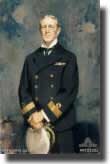 The Australian light cruiser, was actually the first cruiser to be built for the fledgling Royal Australian Navy, she commissioned in June 1913. Displacing 5,400 tons, her armament, 8 by 6 inch guns ( 1 forward, 1 aft, and 3 each port and starboard sides, thus giving a 5 gun broadside ) she also carried torpedo tubes. A touch faster than Emden at 25.5 knots, her crew 390, opposed to that of the German ship of 325 men. Read the article. The Australian light cruiser, was actually the first cruiser to be built for the fledgling Royal Australian Navy, she commissioned in June 1913. Displacing 5,400 tons, her armament, 8 by 6 inch guns ( 1 forward, 1 aft, and 3 each port and starboard sides, thus giving a 5 gun broadside ) she also carried torpedo tubes. A touch faster than Emden at 25.5 knots, her crew 390, opposed to that of the German ship of 325 men. Read the article.
|
|
|
In WW1, German U-Boat U9, destroys three elderly British Light Cruisers, Aboukir, Hogue, and Cressy in under 75 minutes
|
 In the early days of WW1, Cruiser Force C, made up of old Cressy class armoured cruisers patrolled part of the North Sea close to the Hook of Holland. Senior Naval Officers were opposed to this patrol on the grounds that these ships were very vulnerable to any attack from Germany's more modern surface ships, and advised the Admiralty accordingly. This patrol was nicknamed: "The live bait patrol." Nonetheless, my Lords of the Admiralty ignored this advice, and persisted with this operation ... Read the article. In the early days of WW1, Cruiser Force C, made up of old Cressy class armoured cruisers patrolled part of the North Sea close to the Hook of Holland. Senior Naval Officers were opposed to this patrol on the grounds that these ships were very vulnerable to any attack from Germany's more modern surface ships, and advised the Admiralty accordingly. This patrol was nicknamed: "The live bait patrol." Nonetheless, my Lords of the Admiralty ignored this advice, and persisted with this operation ... Read the article.
|
|
|
A Brief History of the Ship's Figurehead
|
 Although a modern definition uses terms such as: "A carving, usually a bust or full length figure at a ship's prow." ( The Illustrated Oxford Dictionary ) or: "A sculptured image decorating the stemhead of a ship." ( Encyclopedia Americana ) This type of artform dates back much much further in time. Read the article. Although a modern definition uses terms such as: "A carving, usually a bust or full length figure at a ship's prow." ( The Illustrated Oxford Dictionary ) or: "A sculptured image decorating the stemhead of a ship." ( Encyclopedia Americana ) This type of artform dates back much much further in time. Read the article.
|
|
|
The Voltaire Pages
|
 In some cases AHOY acts as a Post Office, trying to bring two interested parties together, so they may exchange information pertaining to some one who served in Voltaire. Given the level of interest raised in the ship, her action with Thor, demise, and the surviving crew members captivity in German POW camps, we have decided to consolidate all the Voltaire messages into a major subject on our AHOY Mac's Web Pages site called: THE VOLTAIRE PAGES. Read the article. In some cases AHOY acts as a Post Office, trying to bring two interested parties together, so they may exchange information pertaining to some one who served in Voltaire. Given the level of interest raised in the ship, her action with Thor, demise, and the surviving crew members captivity in German POW camps, we have decided to consolidate all the Voltaire messages into a major subject on our AHOY Mac's Web Pages site called: THE VOLTAIRE PAGES. Read the article.
|
|
|
Liberty Ship William Dawes. Sunk by I-11 on the 22nd. of July 1942. Wreck found in November 2004
|
 Liberty Ship William Dawes, hull number 180, was laid down on the 26th. of October 1941, launched on the 9th. of February 1942, to be completed on the 7th. of May of that year, had but a short life in service. She was one of 2,751 ships of this class built in the United States over WW2, and also one of 200 torpedoed, falling victim to the Japanese submarine I-11 on the 22nd. of July 1942, off the coast of New South Wales, Australia. Read the article. Liberty Ship William Dawes, hull number 180, was laid down on the 26th. of October 1941, launched on the 9th. of February 1942, to be completed on the 7th. of May of that year, had but a short life in service. She was one of 2,751 ships of this class built in the United States over WW2, and also one of 200 torpedoed, falling victim to the Japanese submarine I-11 on the 22nd. of July 1942, off the coast of New South Wales, Australia. Read the article.
|
|
|
The Tragedy of the British Submarine with two illfated names, Thetis and Thunderbolt
|
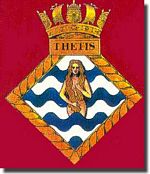 Cammel Laird had built the 1,290 ton HM Submarine Thetis ( her motto" I bide my time." ) launching her on the 29th. of June 1938. The initial trials were delayed because the forward hydroplanes had jammed, but on the 1st. of June 1939, under the command of Lieutenant Commander G. H. Bolus. R.N. trials were finally due to commence. But the submarine was too light to dive, and a survey of water within her various compartments was made, one check was to ascertain if the internal torpedo tubes were flooded. Read the article. Cammel Laird had built the 1,290 ton HM Submarine Thetis ( her motto" I bide my time." ) launching her on the 29th. of June 1938. The initial trials were delayed because the forward hydroplanes had jammed, but on the 1st. of June 1939, under the command of Lieutenant Commander G. H. Bolus. R.N. trials were finally due to commence. But the submarine was too light to dive, and a survey of water within her various compartments was made, one check was to ascertain if the internal torpedo tubes were flooded. Read the article.
|
|
|
Light Cruiser SMS Konigsberg:A World War 1, German East African Raider
|
 By April 1915, the Germans were desperate to break out Konigsberg, a supply ship Ruebens carrying 1,600 tons of coal for the cruiser, plus a host of ammunition and much needed supplies arrived in the Indian Ocean. The ship disguised as a Danish freighter was known to the British authorities, and when she arrived at Manza Bay, the British cruiser Hyacinth came up from the South at full speed, Rueben's Captain was so panic stricken, he ran his ship aground, evacuated his crew, and torched his ship. Read the article. By April 1915, the Germans were desperate to break out Konigsberg, a supply ship Ruebens carrying 1,600 tons of coal for the cruiser, plus a host of ammunition and much needed supplies arrived in the Indian Ocean. The ship disguised as a Danish freighter was known to the British authorities, and when she arrived at Manza Bay, the British cruiser Hyacinth came up from the South at full speed, Rueben's Captain was so panic stricken, he ran his ship aground, evacuated his crew, and torched his ship. Read the article.
|
|
|
The Development of the Catapult Armed Merchantman ( CAM Ships. )
|
 In a desperate attempt to close the gap in the Atlantic Ocean that could not be covered by Allied aircraft flying west from England, and east from Canada, the concept of the Auxiliary Fighter Catapult Ships under the White Ensign, and the Catapult Armed Merchantmen ( CAM ships ) sailing under the Red Duster was conceived and born. Read the article. In a desperate attempt to close the gap in the Atlantic Ocean that could not be covered by Allied aircraft flying west from England, and east from Canada, the concept of the Auxiliary Fighter Catapult Ships under the White Ensign, and the Catapult Armed Merchantmen ( CAM ships ) sailing under the Red Duster was conceived and born. Read the article.
|
|
|
Stupidity reigns and then Admirals collide
|
 A strong naval Commander in Chief of the British Mediterranean Fleet, in whom both his Rear Admiral as second in command, and ten Captains of Battleships had too much faith, or were too frightened to speak out, led two ships of the Fleet to a devastating collision, and a dreadful loss of life, including the C-in C himself. Read the article. A strong naval Commander in Chief of the British Mediterranean Fleet, in whom both his Rear Admiral as second in command, and ten Captains of Battleships had too much faith, or were too frightened to speak out, led two ships of the Fleet to a devastating collision, and a dreadful loss of life, including the C-in C himself. Read the article.
|
|
|
The Top Ten Rivers of the World
|
 The only criterion for selection to this exclusive list is length in miles. The longest river gains first position, and so on in descending order: The only criterion for selection to this exclusive list is length in miles. The longest river gains first position, and so on in descending order:
The Nile, The Amazon, The Yangtze, The Mississippi, The Irtysh, The Amur, The Congo, The Huang-Ho or Yellow, The Lena, and The Mackenzie rivers Read the article.
|
|
|
HMAS Sydney honored at Shrine of Remembrance
|
The story of HMAS Sydney 11 Exhibition, will be mounted by The Naval Historical Society of Australia ( Victorian Chapter ) and HMAS Sydney Association. It will be mounted in the new Undercroft of the Shrine, where up to 1,000 visitors a day visit this memorial for all Servicemen and Women from the State of Victoria who have served their Country, and died from such service. Read the article.
|
|
|
The Auxiliary German Minelayer Doggerbank
|
 This then was one of the unusual stories spawned by World War 2, the somewhat bizarre story of the Doggerbank, an ex British ship captured by the Germans, who sank an ex German Merchant ship captured by the Dutch, only to be despatched by one of their own Country's U-Boats.
Read the article. This then was one of the unusual stories spawned by World War 2, the somewhat bizarre story of the Doggerbank, an ex British ship captured by the Germans, who sank an ex German Merchant ship captured by the Dutch, only to be despatched by one of their own Country's U-Boats.
Read the article.
|
|
|
Top Ten US Navy Submarine Captains in WW2 By Number of Confirmed Ships Sunk
|
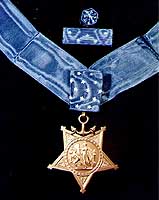 The US Navy and its Submarine arm, over WW2 in the Pacific, claimed to have sunk 4,000 Japanese ships to add up to a gross tonnage of 10 Million tons. Post war, the Joint Army-Navy Assessment Committee ( short title JANAC ) reassessed all these claims that had been credited to the individual Captains and their submarines, and amended them to read: 1,314 ships sunk, to add up to a gross tonnage of 5.3 Million tons, ie slicing the tonnage of ships sunk to almost half that originally credited. The US Navy and its Submarine arm, over WW2 in the Pacific, claimed to have sunk 4,000 Japanese ships to add up to a gross tonnage of 10 Million tons. Post war, the Joint Army-Navy Assessment Committee ( short title JANAC ) reassessed all these claims that had been credited to the individual Captains and their submarines, and amended them to read: 1,314 ships sunk, to add up to a gross tonnage of 5.3 Million tons, ie slicing the tonnage of ships sunk to almost half that originally credited.
Read the article.
|
|
|
The Top Ten German U-Boat Aces of World War 2
|
 Over WW2, Germany produced a number of outstanding U-Boat commanders, from amongst this elite list, I have used the tonnage of enemy shipping sunk, as my yardstick to select the top ten U-Boat Aces from this conflict. I list them in rank order according to their success in sinking Allied ships, and paint a brief pen picture of each of them. Read the article. Over WW2, Germany produced a number of outstanding U-Boat commanders, from amongst this elite list, I have used the tonnage of enemy shipping sunk, as my yardstick to select the top ten U-Boat Aces from this conflict. I list them in rank order according to their success in sinking Allied ships, and paint a brief pen picture of each of them. Read the article.
|
|
|
Pictures of Raider Wolf
|
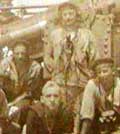 (work in progress) (work in progress)
I have received some reproductions of a collection of 24 photos that were taken on the Voyage of the "Raider Wolf."
"They were given to me some years ago by my daughter's mother in in law. They were found many years ago in a sidewalk sale in San Francisco.
Read the article.
|
|
|
The Battle For Convoy ONS 5. 26th.April - 6th. May 1943
|
 Outward North Atlantic Slow Five, short name ONS 5, with a code name of MARFLEET, was made up of 43 merchant ships, in the main they could be classified as elderly, their destination Halifax in Nova Scotia, with a few ships destined for New York and Boston. This motley band of grey vessels with their names painted out had sailed from five ports, Milford Haven, Liverpool, the Clyde, Oban, and Londonderry. Read the article. Outward North Atlantic Slow Five, short name ONS 5, with a code name of MARFLEET, was made up of 43 merchant ships, in the main they could be classified as elderly, their destination Halifax in Nova Scotia, with a few ships destined for New York and Boston. This motley band of grey vessels with their names painted out had sailed from five ports, Milford Haven, Liverpool, the Clyde, Oban, and Londonderry. Read the article.
|
|
|
Battle of the Java Sea, in which Exeter was sunk
|
 This is the report by the Captain of Exeter, covering the Battle of the Java Sea, in which Exeter was sunk, and Captain O.L.Gordon RN was taken a POW by the Japanese. He recorded the event some three weeks after the action, and hid his notes over his 3.5 years of captivity in a hollowed out shaving cream tube, and then based this despatch to the Admiralty on his long hidden notes after he was freed at the end of WW2. Read the article. This is the report by the Captain of Exeter, covering the Battle of the Java Sea, in which Exeter was sunk, and Captain O.L.Gordon RN was taken a POW by the Japanese. He recorded the event some three weeks after the action, and hid his notes over his 3.5 years of captivity in a hollowed out shaving cream tube, and then based this despatch to the Admiralty on his long hidden notes after he was freed at the end of WW2. Read the article.
|
|
|
The Capture of U-505 by USS Guadalcanal. 4th. of June 1944
|
 Commissioned on the 26th. of August 1941, in all she made 12 patrols sinking 8 ships with a tonnage of 44,962 tons. On the 24th. of October 1943, whilst under a heavy depth charge attack, her Commanding Officer, Kptlt. Peter Zschech committed suicide, the only such case in WW2. The boat was saved and brought back safely to port. Read the article. Commissioned on the 26th. of August 1941, in all she made 12 patrols sinking 8 ships with a tonnage of 44,962 tons. On the 24th. of October 1943, whilst under a heavy depth charge attack, her Commanding Officer, Kptlt. Peter Zschech committed suicide, the only such case in WW2. The boat was saved and brought back safely to port. Read the article.
|
|
|
Salvage team in three-year plan to raise the Graf Spee
|
A salvage plan will be launched next week to raise from the estuary of the River Plate, the wreck of the German Battleship, Graf Spee. The salvage operation is a private venture with German funding and backing from the Uruguayan Government, and is expected to last more than three years. Read the article.
|
|
|
The Battle of the River Plate. 13th. December 1939.
|
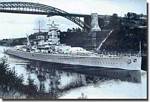 Given the current endeavour to raise the sunken German pocket battleship Admiral Graf Spee, it seems timely to record this historic battle for Ahoy readers. Given the current endeavour to raise the sunken German pocket battleship Admiral Graf Spee, it seems timely to record this historic battle for Ahoy readers.
The German pocket battleship Admiral Graf Spee was loose in the South Atlantic, and the British ship Doric Star on the afternoon of the 2nd. of December 1939, reported that she was under attack by a pocket battleship in position 19 degrees 15 minutes South, 5 degrees 5 minutes East, and the next day, an unknown ship made a similar report from a position 170 miles south west from the Doric Star incident. Read the article.
|
|
|
Interview with Willy Schruefer, sailor in Ramses, captured by HMAS Adelaide
|
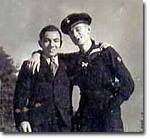 In 1942 whilst serving as a Sub Lieutenant RAN in the Australian Light Cruiser HMAS Adelaide protecting a convoy in company with the Dutch Cruiser Heemskerck, we came across a Merchant Ship which proved to be the German Blockade Runner Ramses. A combination of our shells and scuttling charges sank this ship. We picked up all her survivors. In 2003, I was contacted by an American freelance journalist working in Germany Ward Carr, who had interviewed in the Spring of 2002, Willy Schruefer, who was a sailor ex the Ramses. This means that back in November 1942, both Willy, now a Prisoner of War, and myself were both in HMAS Adelaide at the same time. Read the article. In 1942 whilst serving as a Sub Lieutenant RAN in the Australian Light Cruiser HMAS Adelaide protecting a convoy in company with the Dutch Cruiser Heemskerck, we came across a Merchant Ship which proved to be the German Blockade Runner Ramses. A combination of our shells and scuttling charges sank this ship. We picked up all her survivors. In 2003, I was contacted by an American freelance journalist working in Germany Ward Carr, who had interviewed in the Spring of 2002, Willy Schruefer, who was a sailor ex the Ramses. This means that back in November 1942, both Willy, now a Prisoner of War, and myself were both in HMAS Adelaide at the same time. Read the article.
|
|
|
Postscript to Marauders of the Sea. WW2, with an unusual twist.
|
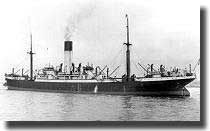 In my Marauders of the Sea. WW2, (See Atlantis where this has been added as a postscript.) I covered briefly the activities of the German Armed Merchant Raiders in WW2. The Atlantis under Captain Rogge was one of these, and in her career sank some 22 ships, the most important being SS Automedon. In my Marauders of the Sea. WW2, (See Atlantis where this has been added as a postscript.) I covered briefly the activities of the German Armed Merchant Raiders in WW2. The Atlantis under Captain Rogge was one of these, and in her career sank some 22 ships, the most important being SS Automedon.
First Lieutenant Ulrich Mohr, leading the boarding party, in the Chart Room came across a long narrow envelope enclosed in a green bag fitted with brass eyelets to allow water to enter, and sink it, in the event of its necessary disposal.
This document was marked: "Highly Confidential .... To be Destroyed" its envelope marked to:"The Commander-in-Chief Far East.... To be Opened Personally." Read the article.
|
|
|
Book review. Lucky Lady by Steve Jackson
|
Anyone who has ever stood a watch at sea, or wants to live with the Sailors through the agony of USS Franklin and the saga of USS Santa Fe, will enjoy this book, and revel in Jackson's tight descriptions of those at sea, and those at home waiting, waiting. Read the article.
|
|
|
National Maritime Museum, Greenwich. London
|
 At Greenwich on the banks of the Thames River is housed the National Maritime Museum, also on this site in the Royal Park are, the Royal Observatory, the Queen's House, and the old Royal Naval College. There is much to enjoy on your arrival, allow yourself plenty of time to visit this wonderful and historical area. Read the article. At Greenwich on the banks of the Thames River is housed the National Maritime Museum, also on this site in the Royal Park are, the Royal Observatory, the Queen's House, and the old Royal Naval College. There is much to enjoy on your arrival, allow yourself plenty of time to visit this wonderful and historical area. Read the article.
|
|
|
Semper Fidelis March and Navy Hymn
|
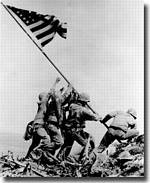 This famous march written by John Philip Sousa takes its name from the US Marines motto, Semper Fidelis ( Always faithful ) He wrote it "one night after my comrades in the Marine Corp had sung their famous hymn at Quantico." This famous march written by John Philip Sousa takes its name from the US Marines motto, Semper Fidelis ( Always faithful ) He wrote it "one night after my comrades in the Marine Corp had sung their famous hymn at Quantico."
Read the article.
|
|
|
New Australian War Memorial at Hyde Park Corner London dedicated by Her Majesty the Queen, and Australian Prime Minister on Tuesday the 11th. of November 2003.
|
 Superimposed on these 24,000 place names are 47 battle sites, where Australians fought in both wars, eg, sacred names like Gallipoli, Lone Pine, are listed, as are names such as Borneo, Lingayen Gulf, and Savo Island ( where I was sunk in HMAS Canberra ) places where I was present in ships of the RAN. These names will be scanned over all the years to come, as veterans seek out their specific place name from whence they enlisted, then the scenes of battles where they fought. As we all die off, our children in the times ahead, when visiting London will make a point of going to Hyde Park Corner, they will then undertake a similar exercise. Read the article. Superimposed on these 24,000 place names are 47 battle sites, where Australians fought in both wars, eg, sacred names like Gallipoli, Lone Pine, are listed, as are names such as Borneo, Lingayen Gulf, and Savo Island ( where I was sunk in HMAS Canberra ) places where I was present in ships of the RAN. These names will be scanned over all the years to come, as veterans seek out their specific place name from whence they enlisted, then the scenes of battles where they fought. As we all die off, our children in the times ahead, when visiting London will make a point of going to Hyde Park Corner, they will then undertake a similar exercise. Read the article.
|
|
|
The Sloop Neva, the first Russian ship to visit Australia
|
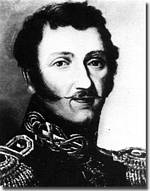 In the first half of the 19th. Century, a number of Russian ships visited the newly found British Colony at Sydney Cove. However, the first to make its way below the equator, and call in at Sydney, was the sloop Neva, under the command of Lieutenant Gagemeister Leontiy Andrianvich, his ship visited over the 16th. of June to the 1st. of July in 1807. In the first half of the 19th. Century, a number of Russian ships visited the newly found British Colony at Sydney Cove. However, the first to make its way below the equator, and call in at Sydney, was the sloop Neva, under the command of Lieutenant Gagemeister Leontiy Andrianvich, his ship visited over the 16th. of June to the 1st. of July in 1807.
Read the article.
|
|
|
What is the oldest shipwreck ever found?
|
 It would appear that the oldest shipwreck found to date, is that of the 5th. BC vessel which was found in 1996 at Tektas, Burnu in Turkey. This site is located in the Agean off the west coast of Turkey, between the Greek isles of Chios and Samos. It would appear that the oldest shipwreck found to date, is that of the 5th. BC vessel which was found in 1996 at Tektas, Burnu in Turkey. This site is located in the Agean off the west coast of Turkey, between the Greek isles of Chios and Samos.
Read the article.
|
|
|
His Majesty's Auxiliary Troopship Shropshire
|
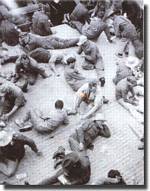 This ship with the same name as our wartime heavy cruiser HMAS Shropshire, was built in 1911 as a Federal Steam Navigation Company Ltd of London ship in UK. She was 8,130 tons, and in WW1 was requisitioned along with othe British ships and a few captured enemy vessels to transport members of AIF overseas. This ship with the same name as our wartime heavy cruiser HMAS Shropshire, was built in 1911 as a Federal Steam Navigation Company Ltd of London ship in UK. She was 8,130 tons, and in WW1 was requisitioned along with othe British ships and a few captured enemy vessels to transport members of AIF overseas.
Read the article.
|
|
|
The Golden Cruiser. HMS Edinburgh sunk in WW2, carrying 5 tons of Russian gold with her
|
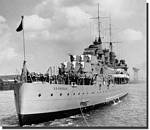 This ship carried Rear Admiral Bonham-Carter, now with his flag Captain H.W. Faulkner, they surveyed the damage caused by the German U-boat torpedoes, but an added burden confronted them both. In one of the ship's magazines, 5 tons of Russian gold had been loaded from a heavily guarded lighter before they sailed. Purporting to be ammunition boxes, this pretence was soon aborted, as stencilled water painted marks on the boxes soon were washed away by the sleet falling at the time, dripping red splashes onto the slush covered deck. Read the article. This ship carried Rear Admiral Bonham-Carter, now with his flag Captain H.W. Faulkner, they surveyed the damage caused by the German U-boat torpedoes, but an added burden confronted them both. In one of the ship's magazines, 5 tons of Russian gold had been loaded from a heavily guarded lighter before they sailed. Purporting to be ammunition boxes, this pretence was soon aborted, as stencilled water painted marks on the boxes soon were washed away by the sleet falling at the time, dripping red splashes onto the slush covered deck. Read the article.
|
|
|
Old Ironsides, USS Constitution
|
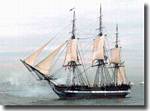 To the astonishment of the British, all their shot merely bounced harmlessly off the hull of Constitution, her thick oak planking preserving her from harm, thus giving the ship the nickname of "Old Ironsides". Later in December of 1812, another British Frigate Java met her fate in battle with Constitution. Before peace was finally declared in 1815, she had captured eight more British ships. Read the article. To the astonishment of the British, all their shot merely bounced harmlessly off the hull of Constitution, her thick oak planking preserving her from harm, thus giving the ship the nickname of "Old Ironsides". Later in December of 1812, another British Frigate Java met her fate in battle with Constitution. Before peace was finally declared in 1815, she had captured eight more British ships. Read the article.
|
|
|
Cruiser Aurora signals start of Russian Revolution in October 1917
|
 Aurora assisted in the seige of Leningrad in WW2, was sunk, recovered, and rebuilt. Sitting at its berth alongside the famous Hermitage, this ship has witnessed the demise of the old USSR, and the emergence of the present amalgam of individual States formed from the old Soviet Union. What does the future hold for a ship that has spanned all the differing regimes that have held sway in this part of the world? Read the article. Aurora assisted in the seige of Leningrad in WW2, was sunk, recovered, and rebuilt. Sitting at its berth alongside the famous Hermitage, this ship has witnessed the demise of the old USSR, and the emergence of the present amalgam of individual States formed from the old Soviet Union. What does the future hold for a ship that has spanned all the differing regimes that have held sway in this part of the world? Read the article.
|
|
|
World War 2 Campaign Stars and Medals
|
 There were 8 Campaign Stars, the Defence Medal, and the War Medal awarded for active service in WW2, in addition some Australian Servicemen could qualify for the Australian Service Medal 1939-1945, and lastly the Australian Service Medal 1945-1975 was issued for peace keeping or non warlike operations in a wide variety of theatres over the years of 1945 to 1975. This last medal is always issued with a clasp to denote the area of service. Read the article. There were 8 Campaign Stars, the Defence Medal, and the War Medal awarded for active service in WW2, in addition some Australian Servicemen could qualify for the Australian Service Medal 1939-1945, and lastly the Australian Service Medal 1945-1975 was issued for peace keeping or non warlike operations in a wide variety of theatres over the years of 1945 to 1975. This last medal is always issued with a clasp to denote the area of service. Read the article.
|
|
|
SS Athenia, First Casualty of the U-Boat War on the 3rd. of September 1939
|
Berlin found out about this attack from news reports, and knowing that U-30 was the only Boat in that area, were soon able to pin this error on her.  Hitler now wanted a cover up. He did not wish to have another event like the Lusitania affair from WW1 coming back to haunt him, plus Donitz, and his U-Boat arm. Goebells spread the word that it was the British that had themselves torpedoed Athenia, in their attempt to bring the United States quickly into WW2 against Germany Read the article. Hitler now wanted a cover up. He did not wish to have another event like the Lusitania affair from WW1 coming back to haunt him, plus Donitz, and his U-Boat arm. Goebells spread the word that it was the British that had themselves torpedoed Athenia, in their attempt to bring the United States quickly into WW2 against Germany Read the article.
|
|
|
60th. Anniversary of Operation Jaywick
|
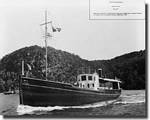 This was an amazing feat carried out with great daring and skill, at a time when the Japanese forces were in full cry, rampaging across the Pacific, it was but a small set back for the enemy, but at least we felt all was not lost, and we could hit back if only in a small way. The Krait raid will long be remembered with pride by Australian Servicemen. Read the article. This was an amazing feat carried out with great daring and skill, at a time when the Japanese forces were in full cry, rampaging across the Pacific, it was but a small set back for the enemy, but at least we felt all was not lost, and we could hit back if only in a small way. The Krait raid will long be remembered with pride by Australian Servicemen. Read the article.
|
|
|
England versus Spain. The Defeat of the Spanish Armada. 1588
|
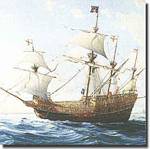 Henry VIII was very conscious of the growing naval power of James the IVth. of Scotland, who, at that stage had an alliance with the French. James had built up quite a fleet of ships, including the Great Michael, carrying a huge gun. To counter this ship, and the Scottish fleet, Henry built new ships including the famous Mary Rose, which sank in the Solent in 1545 with the loss of some 700 sailors ... Read the article. Henry VIII was very conscious of the growing naval power of James the IVth. of Scotland, who, at that stage had an alliance with the French. James had built up quite a fleet of ships, including the Great Michael, carrying a huge gun. To counter this ship, and the Scottish fleet, Henry built new ships including the famous Mary Rose, which sank in the Solent in 1545 with the loss of some 700 sailors ... Read the article.
|
|
|
The Genesis of the Austrian Navy.
|
 The Danube River with a length of 2,840 kilometers was an important link in Austria's defence chain. Not only trade plied its waters, but it became a supply line during wartime. The Turks to the east were always a threat, and the Hapsburgs reacted by producing sail- frigates for service in the middle and lower reaches of the Danube. These ships of the 16th Century may be marked as the genesis of an Austrian navy. Read the article. The Danube River with a length of 2,840 kilometers was an important link in Austria's defence chain. Not only trade plied its waters, but it became a supply line during wartime. The Turks to the east were always a threat, and the Hapsburgs reacted by producing sail- frigates for service in the middle and lower reaches of the Danube. These ships of the 16th Century may be marked as the genesis of an Austrian navy. Read the article.
|
|
|
Settlement of Australia. The First Fleet. 1787-1788
|
 Captain James Cook had sighted the east coast of Australia in 1770, and then landed at Botany Bay. On his return to England, he had recommended this site as a suitable place to establish a settlement in this new and far off land. With the housing of many convicted felons presenting problems in England, his recommendation came to be considered, and it was decided to now establish a penal colony in Australia.
Read the article. Captain James Cook had sighted the east coast of Australia in 1770, and then landed at Botany Bay. On his return to England, he had recommended this site as a suitable place to establish a settlement in this new and far off land. With the housing of many convicted felons presenting problems in England, his recommendation came to be considered, and it was decided to now establish a penal colony in Australia.
Read the article.
|
|
|
Wartime Memorials across Australia
|
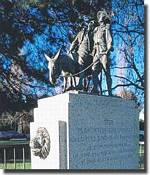 War Memorials to remember the service of those who died or served in time of war to keep our country free are many and varied. I have most probably but scratched the surface of this subject, but this article serves to remind us all " That the cause of freedom " carries a high price, very often it proved fatal for many, and we need to continue to recall with pride and gratitude, the service of those who did not return.
Read the article. War Memorials to remember the service of those who died or served in time of war to keep our country free are many and varied. I have most probably but scratched the surface of this subject, but this article serves to remind us all " That the cause of freedom " carries a high price, very often it proved fatal for many, and we need to continue to recall with pride and gratitude, the service of those who did not return.
Read the article.
|
|
|
SS Ceramic, a victim of U-515 on the 7th. of December 1942
|
 When steaming west of the Azores on the 7th. of December 1942 the Ceramic was sighted and then stalked by the German U-Boat U-515. We have already made the acquaintance of this boat and her Captain Werner Henke. The weather was cold with rough seas and the time about 2000. ( 8 PM ) Then Henke struck with one torpedo, and several minutes after this explosion, two more hits were made in the engine room. When steaming west of the Azores on the 7th. of December 1942 the Ceramic was sighted and then stalked by the German U-Boat U-515. We have already made the acquaintance of this boat and her Captain Werner Henke. The weather was cold with rough seas and the time about 2000. ( 8 PM ) Then Henke struck with one torpedo, and several minutes after this explosion, two more hits were made in the engine room.
Read the article.
|
|
|
Korvettenkapitan ( granted postumously ) Werner Henke. A top U-Boat Ace.
|
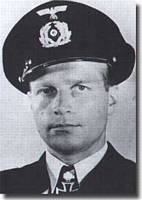 On the 18th. of July 1944 Admiral Donitz issued the following day order for his U-Boat force: On the 18th. of July 1944 Admiral Donitz issued the following day order for his U-Boat force:
"Commander Kapitanleutnant Werner Henke, recipient of the Knights Cross with Oak Leaves to the Iron Cross, was killed during an attempt to escape from captivity. We have lost one of our best. He combined reckless daring with prudence and outstanding ability. He proved himself against convoys, independent merchantships and warships, and sinking 26 ships for a total of 166,000 tons, one cruiser and one destroyer. We strike the colors for a man of iron and a brave fighter who was an inspiring example to his crew, and for a good comrade. The struggle against the enemy, in which he was killed, will continue."
Read the article.
|
|
|
U-Boat 869 believed sunk off Gibraltar in 1945,
turns up on the bottom
off New Jersey, USA.
|
 Reported to have been sunk on the 28th. of February 1945, off Gibraltar by the US Destroyer Escort USS Fowler, and the French Sub Chaser L'Indescret, was the German U-Boat, U-859. Not so apparently, this boat had been ordered to move her operational area from off shore America to close to Gibraltar by Admiral Donitz of U-Boat Command. This order was never received, and she stayed operational off America, here she became sunk, self destroyed.
Read the article. Reported to have been sunk on the 28th. of February 1945, off Gibraltar by the US Destroyer Escort USS Fowler, and the French Sub Chaser L'Indescret, was the German U-Boat, U-859. Not so apparently, this boat had been ordered to move her operational area from off shore America to close to Gibraltar by Admiral Donitz of U-Boat Command. This order was never received, and she stayed operational off America, here she became sunk, self destroyed.
Read the article.
|
|
|
French Submarine La Perle, who wants
friends that sink you?
|

There seems little doubt that HMCS Dunver, the ship in which SOE was
embarked, would have received signals with information about La Perle and her
Atlantic crossing. At the subsequent Board of Inquiry, Stephen's gave evidence
that he had not seen the sailing orders of La Perle from St John's, and
was unaware of the bombing restrictions in force until after the fatal
attack. He however did acknowledge that the most recent signal received from
Western Approaches did place La Perle close to the Swordfish sighting.
He should have been more careful with his use of attacking
aircraft. Read the article.
|
|
|
U-767 Lost and found
|
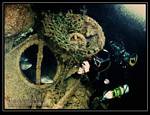 She made but one patrol with very limited success, one ship of 1,370 tons
sunk, the British Frigate Mourne, on the 15th. of June 1944. Only three
days later U-767 was detected by three ships from the British Support
Group 14, HM ships Fame, Inconstant, and Havelock.
Fame attacked with her Hedge Hog, reporting two or three hits at a
depth of 95 feet, the Hedge Hog, an ahead throwing weapon, firing off 24
under water projectiles which only explode on achieving a hit on their
submarine target. She made but one patrol with very limited success, one ship of 1,370 tons
sunk, the British Frigate Mourne, on the 15th. of June 1944. Only three
days later U-767 was detected by three ships from the British Support
Group 14, HM ships Fame, Inconstant, and Havelock.
Fame attacked with her Hedge Hog, reporting two or three hits at a
depth of 95 feet, the Hedge Hog, an ahead throwing weapon, firing off 24
under water projectiles which only explode on achieving a hit on their
submarine target.
Read the article.
|
|
|
U-Boat U-482, Success, then lost with all hands
|
The British Admiralty, in a more recent assessment about
the destruction of U-482, have now stated that the cause of her loss is
unknown. But the most probable cause is: She sank with all hands after striking
a mine.
Thus the actual cause of U-482's demise is unlikely to ever be uncovered, as
she became yet another victim in the long running saga of The Battle of The
Atlantic. Read the article.
|
|
|
Tocumwal Historic Aerodrome Museum
|
(work in progress)
So, why Tocumwal, the back of beyond, for the largest aerodrome at the time in the Southern Hemisphere? To answer that question we have to go back to those fearful years, to the beginning of 1942, when Japan's military might was in full flight towards us. England's invincibility had just been shattered with the sinking of the capital ships Prince of Wales and Repulse, off Singapore which had fallen almost without fight, Papua New Guinea was being occupied and Australia itself was under attack, with the first of 64 air raids on Darwin and surrounding areas. For the first time, bombs were falling on Australian soil and Australian people for the first terrible time were experiencing the terror of air attack, the crash and concussion of bombing, the roar of machine gunning, the stench of smoke and fire and death, and above all, the awful realisation that we were virtually defenceless against an enemy in full cry towards us. Read the article.
|
|
|
Visit to Tocomwal New South Wales 11/13 June 2003
|
We had not seen each other for some 20 years, but have kept in touch over that time, Kevin for many years farmed some 2 square miles of irrigated country at Jerilderie, growing rice, wheat and canola etc, but had sold the farm 2 years ago and moved into Tocomwal, a country town of about 2,000 people nestled close to the Murray River. Read the article.
|
|
|
HMAS Yarra blasted to pieces by Japanese Squadron on the 4th. of March 1942.
|
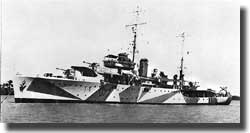 Aboard the Japanese cruiser Maya, some survivors of HMS Stronghold, sunk two days earlier, watched in horror as Yarra was battered to death, one of them reported:- " Yarra was the only ship left afloat, the two destroyers were circling her, she appeared to be stationary, and were pouring fire into her. She was still firing back, we could see odd gun flashes....the last we saw of Yarra was a high column of smoke, but we were vividly impressed by her fight." The gun flashes observed must have come from Taylor, still manning his 4 inch mounting. Read the article. Aboard the Japanese cruiser Maya, some survivors of HMS Stronghold, sunk two days earlier, watched in horror as Yarra was battered to death, one of them reported:- " Yarra was the only ship left afloat, the two destroyers were circling her, she appeared to be stationary, and were pouring fire into her. She was still firing back, we could see odd gun flashes....the last we saw of Yarra was a high column of smoke, but we were vividly impressed by her fight." The gun flashes observed must have come from Taylor, still manning his 4 inch mounting. Read the article.
|
|
|
Action against the French Fleet at Mers-el-Kebir by the British Force H over 3rd./6th. July 1940
|
 If the French
Admiral refused to accept any of these proposals Sir James Somerville could
accept demilitarisation of the French ships at their present berths, providing
it could be achieved within 6 hours, and this action would prevent their use
over the next 12 months. If none of these alternatives were accptable to the
French, Somerville was ordered to destroy the ships, especially Dunkerque and
Strasbourg. The ships at Oran should also be destroyed if it did not entail any
considerable loss of civilian lives. If the French
Admiral refused to accept any of these proposals Sir James Somerville could
accept demilitarisation of the French ships at their present berths, providing
it could be achieved within 6 hours, and this action would prevent their use
over the next 12 months. If none of these alternatives were accptable to the
French, Somerville was ordered to destroy the ships, especially Dunkerque and
Strasbourg. The ships at Oran should also be destroyed if it did not entail any
considerable loss of civilian lives.
Read the article.
|
|
|
Lighthouses on the Victorian Coast
|
 Victoria is the smallest and most southern state on the mainland of Australia, but it probably is the site for the greatest number of maritime disasters around the entire coast of our nation. Particularly along the rugged coastline of western Victoria which stretches from Port Phillip Heads westwards to the South Australian border, to be known as the Shipwreck Coast. Read the article. Victoria is the smallest and most southern state on the mainland of Australia, but it probably is the site for the greatest number of maritime disasters around the entire coast of our nation. Particularly along the rugged coastline of western Victoria which stretches from Port Phillip Heads westwards to the South Australian border, to be known as the Shipwreck Coast. Read the article.
|
|
|
German U-331 sinks British Battleship HMS Barham in the Mediterranean on the 25th. of November 1941
|
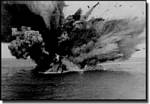 When on the 25th. of November 1941, Barham was steaming in the Mediterranean, with 2 other British Battleships screened by 8 destroyers to cover an attack on an Italian convoy, Kapitan Leutnant Hans-Diedrich Freiherr von Tiesenhausen, in U-331, sighted this group, at a range of only 1,200 yards he fired a spread of 4 torpedoes at the centre battleship in the line of three. Barham was struck by 3 of these torpedoes, she rolled to port, her after magazine exploded with a horrific roar, she quickly sank taking 2/3 of her crew with her. Read the article. When on the 25th. of November 1941, Barham was steaming in the Mediterranean, with 2 other British Battleships screened by 8 destroyers to cover an attack on an Italian convoy, Kapitan Leutnant Hans-Diedrich Freiherr von Tiesenhausen, in U-331, sighted this group, at a range of only 1,200 yards he fired a spread of 4 torpedoes at the centre battleship in the line of three. Barham was struck by 3 of these torpedoes, she rolled to port, her after magazine exploded with a horrific roar, she quickly sank taking 2/3 of her crew with her. Read the article.
|
|
|
Sinking of the Struma, yet another tragedy at sea during WW2
|
 With little food or water, crammed into this small craft the almost 800 Jews, were in a pitiful state, they drifted aimlessly all night, to be located the following morning by a Russian submarine, a torpedo was fired to quickly sink Struma. 269 women, 103 children and 406 men all died, there was but one survivor, David Stolier. Read the article. With little food or water, crammed into this small craft the almost 800 Jews, were in a pitiful state, they drifted aimlessly all night, to be located the following morning by a Russian submarine, a torpedo was fired to quickly sink Struma. 269 women, 103 children and 406 men all died, there was but one survivor, David Stolier. Read the article.
|
|
|
The Falkland Islands War, 1982.
|
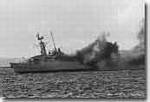
Britain had drawn a Total Exclusion Zone around the Falkland Islands group, and threatened to destroy both enemy ships and aircraft entering into the TEZ. On the 2nd. of May, the British Atomic submarine Conqueror came upon the Argentinean Cruiser General Belgrano, ( this ship was of course the ex USS Phoenix, which was alongside at Pearl Harbor when the Japanese attacked on the 7th. of December 1941, she escaped to sea, she had a distinguished career in the Pacific War, often working with my ship HMAS Shropshire.) Read the article.
|
|
|
Clipper Ship Loch Ard, a victim of the Shipwreck Coast in 1878
|
 When she was almost three months out from England, only a few days from her destination, Loch Ard ran into bad weather with poor visibility. Captain George Gibb was way off course, when sheer cliffs almost at the waters edge were sighted, only some 2 kilometers away, he fought to gain more searoom for his ship, dropping anchors. All to no avail, his clipper struck Mutton Bird Island with an awful crash, to sink within 15 minutes. Loch Ard had come to grief off the now named Loch Ard Gorge, situated in Port Campbell National Park, on the southern coast of Victoria, about 250 kilometers west of Melbourne. Read the article. When she was almost three months out from England, only a few days from her destination, Loch Ard ran into bad weather with poor visibility. Captain George Gibb was way off course, when sheer cliffs almost at the waters edge were sighted, only some 2 kilometers away, he fought to gain more searoom for his ship, dropping anchors. All to no avail, his clipper struck Mutton Bird Island with an awful crash, to sink within 15 minutes. Loch Ard had come to grief off the now named Loch Ard Gorge, situated in Port Campbell National Park, on the southern coast of Victoria, about 250 kilometers west of Melbourne. Read the article.
|
|
|
The Battle for Malta. Six Vital Months - Spring and Summer 1942
|
 "The greatest of battles for supply fell upon Malta. This was now turned into a hell. Malta was a base for British submarines and aircraft preying on Axis lines of supply to Libya. In the spring of 1942, the Axis decided to obliterate that base and they wanted to starve it as well. Right through the spring they turned such blitz upon Malta as no other island or city had seen in the war. It was a siege of annihilation. One after another all the great sieges were eclipsed - England and Odessa, Sebastopol and Tobruk. Malta became the most bombed place on earth." Read the article. "The greatest of battles for supply fell upon Malta. This was now turned into a hell. Malta was a base for British submarines and aircraft preying on Axis lines of supply to Libya. In the spring of 1942, the Axis decided to obliterate that base and they wanted to starve it as well. Right through the spring they turned such blitz upon Malta as no other island or city had seen in the war. It was a siege of annihilation. One after another all the great sieges were eclipsed - England and Odessa, Sebastopol and Tobruk. Malta became the most bombed place on earth." Read the article.
|
|
|
USS Mount Hood Explodes at Manus 10th. of November 1944
|
 Enemy action was ruled at as a cause of this disaster, the most probable reason for the explosion appears to have been rough handling of ammunition being loaded or unloaded, and it seems likely that the accident was caused by the detonation of Torpex filled Depth bombs being loaded into number 4 and 5 holds. Detonation could have been set off with a bomb on its way down to a hold striking a hatch, or the careless dropping of it into a hold. Read the article. Enemy action was ruled at as a cause of this disaster, the most probable reason for the explosion appears to have been rough handling of ammunition being loaded or unloaded, and it seems likely that the accident was caused by the detonation of Torpex filled Depth bombs being loaded into number 4 and 5 holds. Detonation could have been set off with a bomb on its way down to a hold striking a hatch, or the careless dropping of it into a hold. Read the article.
|
|
|
The Battle of Leyte Gulf. 23 - 26 October 1944
|
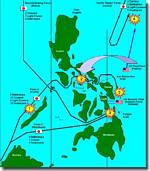
In July of 1944, President Franklin Roosevelt traveled to San Diego, to embark in USS Baltimore, a heavy cruiser, which now sailed for Honolulu. The President hosted a dinner on board with Admiral Chester Nimitz and General Douglas MacArthur, he turned to the General with:
"Douglas, where do we go next?" Read the article.
|
|
|
An Unusual Link Between HMAS Warramunga and HMAS Warramunga 1
|
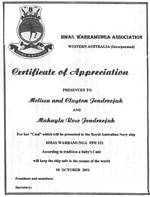 According to Scottish folklore, if a child is born with a Caul over its head it will never drown. A Caul is that part of the amniotic sac which SOMETIMES envelopes the head of a child in the form of a membrane. It is a sailor's tradition that those who have a Caul cannot drown and when given to a ship causes that ship to be protected. When Warramunga 1 was "born" during WW2 she was presented with a Caul to prevent her from sinking. Read the article. According to Scottish folklore, if a child is born with a Caul over its head it will never drown. A Caul is that part of the amniotic sac which SOMETIMES envelopes the head of a child in the form of a membrane. It is a sailor's tradition that those who have a Caul cannot drown and when given to a ship causes that ship to be protected. When Warramunga 1 was "born" during WW2 she was presented with a Caul to prevent her from sinking. Read the article.
|
|
|
The Golden Shipwreck. Steam Clipper Royal Charter comes to grief
|
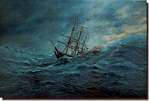 Close to Cape Horn an iceberg was narrowly avoided, and by the 24th. of October, the ship was anchored some 20 miles off the port of Cork in Ireland. Course was set for Liverpool, and with night fast falling, the wind was freshening, to quickly develop into a full gale, which fell with great fury upon the ship. Off the Skerries, Captain Taylor called for a Pilot, to no avail, again he asked for a Pilot off Point Lynas, but no pilot boat was forthcoming, it was far too rough for any small boat to venture out into the gale force winds and wild seas. Read the article. Close to Cape Horn an iceberg was narrowly avoided, and by the 24th. of October, the ship was anchored some 20 miles off the port of Cork in Ireland. Course was set for Liverpool, and with night fast falling, the wind was freshening, to quickly develop into a full gale, which fell with great fury upon the ship. Off the Skerries, Captain Taylor called for a Pilot, to no avail, again he asked for a Pilot off Point Lynas, but no pilot boat was forthcoming, it was far too rough for any small boat to venture out into the gale force winds and wild seas. Read the article.
|
|
|
An Anzac Day Address to Caulfield Grammar School
|
On Friday last, the 25th. of April it was 88 years ago that members of the Australian and New Zealand Army Corps stormed ashore at Gallipoli in turkey. That legendary word, "ANZAC," was coined, and , entered for all time into the language of both Australia and New Zealand. Read the article.
|
|
|
Heaving the Lead, and Markings on a lead line
|
 A lead weight hollowed out at the bottom is fitted to a lead line, so that it may be armed with tallow, this allows the nature of the bottom to be ascertained when a lead line is used by a seaman to find the depth of water when a ship is navigating in restricted or shallow water. A lead weight hollowed out at the bottom is fitted to a lead line, so that it may be armed with tallow, this allows the nature of the bottom to be ascertained when a lead line is used by a seaman to find the depth of water when a ship is navigating in restricted or shallow water.
Read the article.
|
|
|
The Australians at War Film Archive
|
Our Veteran's Affairs Department have indicated they are commissioning the Australians at War Film Archive. A film and production company Mullion Creek Productions Pty Ltd will gather material over two years speak to a large number of Veterans and film about 20,000 hours of interviews. Read the article.
|
|
|
Early French Explorers of Australia
|
 In the 18th. century, there are exotic French names such as Nicolas Baudin, Jean-Francois de Galaup Compte de La Perouse, Antoine Raymond Joseph de Brimi D'Entrecasteaux, and Louis Bougainville, names that one would expect to find gracing elegant Parisian salons, rather than exploring the distant shores of Australia, and the vast expanses of the Pacific Ocean. But no, these early French explorers and their small ships were out pushing back the frontiers of exploration, seeking out new territory to chart and claim for France, to expand her colonial empire. Read the article. In the 18th. century, there are exotic French names such as Nicolas Baudin, Jean-Francois de Galaup Compte de La Perouse, Antoine Raymond Joseph de Brimi D'Entrecasteaux, and Louis Bougainville, names that one would expect to find gracing elegant Parisian salons, rather than exploring the distant shores of Australia, and the vast expanses of the Pacific Ocean. But no, these early French explorers and their small ships were out pushing back the frontiers of exploration, seeking out new territory to chart and claim for France, to expand her colonial empire. Read the article.
|
|
|
Early Explorations of Australia - Index
|
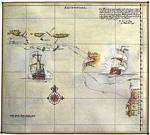 Terra Australis located south of the equator attracted the attention of the Dutch, English and French Explorers and Navigators. The Dutch were here first on the North East corner and West coast of this new land, much later, the English and French followed, these two countries almost dead heated in the area of Botany Bay. These articles cover this age of discovery and some settlement, far far away from Europe. Read the article. Terra Australis located south of the equator attracted the attention of the Dutch, English and French Explorers and Navigators. The Dutch were here first on the North East corner and West coast of this new land, much later, the English and French followed, these two countries almost dead heated in the area of Botany Bay. These articles cover this age of discovery and some settlement, far far away from Europe. Read the article.
|
|
|
Early Dutch Explorers on the Australian Coast 1606 - 1636
|
 The first Europeans to visit Australia were not the English navigators but came from Holland. During the 15th. and 16th. centuries it was the Spanish, Portuguese and the Dutch seamen that pushed back the exploration frontiers. My country might well speak Dutch rather than English, it took the British explorer Captain James Cook until 1770 to discover and claim for England the east coast of Australia. Read the article. The first Europeans to visit Australia were not the English navigators but came from Holland. During the 15th. and 16th. centuries it was the Spanish, Portuguese and the Dutch seamen that pushed back the exploration frontiers. My country might well speak Dutch rather than English, it took the British explorer Captain James Cook until 1770 to discover and claim for England the east coast of Australia. Read the article.
|
|
|
Wyatt Earp, A Ship of Several Names and a Lifetime of Adventure.
|
 Built as Fanefford, in Norway in 1919, this single decked motor ship was 150 feet long and when fully loaded drew between 16 to 17 feet, her tonnage just 402 tons. A vessel that had sailed under four different names, in both the northern and southern hemispheres, had been involved in a multitude of shipping activities, including making aviation history in the Antarctic, finally came to a sad end on a dark and stormy night off the coast of Queensland Australia. Read the article. Built as Fanefford, in Norway in 1919, this single decked motor ship was 150 feet long and when fully loaded drew between 16 to 17 feet, her tonnage just 402 tons. A vessel that had sailed under four different names, in both the northern and southern hemispheres, had been involved in a multitude of shipping activities, including making aviation history in the Antarctic, finally came to a sad end on a dark and stormy night off the coast of Queensland Australia. Read the article.
|
|
|
Gun Turret from USS Monitor Sees the Light of Day After 140 Years
|
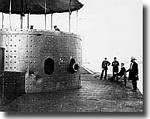 Because the Monitor was quite deep in about 70 metres of water, it was then necessary for the diving team to use saturation diving, ie the divers lived in a pressurised chamber for up to two weeks at a time on the Wotan, a salvage barge. On the evening of the 5th. of August 2002, US Navy divers hooked large steel cables onto the turret which was then slowly winched to the surface. Read the article. Because the Monitor was quite deep in about 70 metres of water, it was then necessary for the diving team to use saturation diving, ie the divers lived in a pressurised chamber for up to two weeks at a time on the Wotan, a salvage barge. On the evening of the 5th. of August 2002, US Navy divers hooked large steel cables onto the turret which was then slowly winched to the surface. Read the article.
|
|
|
Operation Downfall, The Planned Invasion of Japan on November 1st. 1945
|
 Hidden in the US National Archives for many years were the Top Secret documents that related to the Plans for Operation Downfall, the Invasion of Japan, scheduled to take place on November 1st. 1945. The United States had finalised this operation over the American spring and summer of that year. These documents, now declassified, allow us to contemplate the horrific task, that in the main, US forces would have faced when attempting to invade the Japanese homeland. Read the article. Hidden in the US National Archives for many years were the Top Secret documents that related to the Plans for Operation Downfall, the Invasion of Japan, scheduled to take place on November 1st. 1945. The United States had finalised this operation over the American spring and summer of that year. These documents, now declassified, allow us to contemplate the horrific task, that in the main, US forces would have faced when attempting to invade the Japanese homeland. Read the article.
|
|
|
History of the Boatswain's Call
|
 It was first used on English ships in the thirteenth century, during the crusades and became known as "The Call" about 1670 when the Lord High Admiral wore a gold whistle as a badge of rank. This was known as the "Whistle of Honour." Read the article. It was first used on English ships in the thirteenth century, during the crusades and became known as "The Call" about 1670 when the Lord High Admiral wore a gold whistle as a badge of rank. This was known as the "Whistle of Honour." Read the article.
|
|
|
The Loss of Trial in 1622, Oldest Wreck on the Australian Coast
|
The English East India Company in 1621, dispatched their ship Trial on a journey to the East Indies via the Cape of Good Hope. It had only been 10 years earlier that this supposedly faster route to the East Indies had been pioneered by the Dutch. It was not until 1969 that an attempt was made to find the wreck site of this first British shipwreck on the Australian coast. Read the article.
|
|
|
Arlington National Cemetery. Virginia. United States of America.
|
Casualities in the American Civil War were extremely high, hospitals and burial grounds near Washington D.C. were under extreme pressure for both beds and final resting places. It was in 1864, that Quartermaster General, Montgomery Meigs proposed that 200 acres of the Robert E. Lee’s family property at Arlington should become a cemetery. Read the article.
|
|
|
The Role of the Rescue Ships in the Battle of the Atlantic
|
In WW2, the British Merchant Navy suffered losses of some 32,952 personnel from a total strength of about 185,000. This figure represents a loss of 17.8%, and compares unfavourably with losses of 6% for the British Army, 9% for the Royal Air Force, and 9.3% for the Royal Navy. These enormous losses would have been even higher were it not for the 29 Rescue Ships which became operational from January 1941, and served until April 1945. Read the article.
|
|
|
Blessing of the Royal Australian Navy Cruisers Memorial Cairn, November 2002
|
The ceremony was conducted by Reverend Canon W. Devonshire with me, as President of HMAS Canberra/HMAS Shropshire Association here in Victoria reading the inscriptions on the brass plaque detailing the service of the seven cruisers during WW2, HMA Ships, Australia, Canberra, Shropshire, all 8 inch gunned heavy cruisers, and Adelaide, Hobart. Perth, and Sydney, all 6 inch gunned light cruisers. Read the article.
|
|
|
CSS H L Hunley, the Confederate submersible sunk off Charleston Harbour in 1864, found and recovered
|
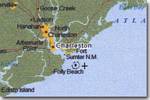 I first noted the Confederate submersible H L Hunley's place in Naval History, when I wrote my Under Water Warfare. The Struggle Against the Submarine Menace 1939-1945 in 1997. I first noted the Confederate submersible H L Hunley's place in Naval History, when I wrote my Under Water Warfare. The Struggle Against the Submarine Menace 1939-1945 in 1997.
Off Charleston, South Carolina, in 1864, it had despatched the Union warship USS Housatonic, and itself to the ocean floor, to mark being the first submarine in history to sink a warship. This then, is the story of it's success, demise, and, in 2000, it's discovery and resurrection from its watery grave. Read the article.
|
|
|
Admiralty House, The Sydney Residence of the Governor General of Australia
|
Admiralty House, the Sydney residence of the Australian Governor General, has a long and interesting history dating back to the early days of the convict settlement at Port Jackson. During my tenure as Aide-de-Camp to His Excellency Sir William McKell over 1950-1953, I often stayed in this grand old home. It is a beautiful house, with it’s lovely staircase, and it’s past traditions of serving Admirals depicted by their family crests in the stained glass windows. Read the article.
|
|
|
Bits of Naval History are tucked into all sort of corners across Australia
|
I am suprised where one may find little bits of Naval History tucked into all sort of corners across  Australia, and some one should try and catalogue it all some day , not that I would know how one would or could start that project. Australia, and some one should try and catalogue it all some day , not that I would know how one would or could start that project.
There is for instance, in the town of Whyalla in the state of South Australia the actual mine sweeper named after this town, the Corvette Whyalla, sitting high and dry in the main street. Read the article.
|
|
|
Letter from the High Commissioner, The Republic of Malta
|
The Republic of Malta struck the National Commemmorative Medal to mark the Fiftieth Anniversary of the award of the George Cross to Malta. In 1994, I received this letter confering this Medal on me, it was for my service in HMAS Australia in 1940, when as part of Force H based on Gibraltar we had supported a convoy to relieve beleagured Malta. Read the article.
|
|
|
Jervis Year. The Class of 1936. Royal Australian Naval College.
|
![[Image]](Images/JervisYear1936Small.jpg) In January of 1936, 13, thirteen year old boys who were drawn from Victoria, New South Wales, and South Australia, came together as the Jervis Year, at the Royal Australian Naval College, which was located at Australia’s main Naval training depot, HMAS Cerberus at Crib Point Victoria. In January of 1936, 13, thirteen year old boys who were drawn from Victoria, New South Wales, and South Australia, came together as the Jervis Year, at the Royal Australian Naval College, which was located at Australia’s main Naval training depot, HMAS Cerberus at Crib Point Victoria.
They had been chosen in 1935, from many applicants around Australia who undertook a written examination, then a medical examination, to finally be interviewed by a Board of Naval Officers, who had selected just 13 of them to join the Royal Australian Naval College as Cadet Midshipmen, and undergo 4 years of rigorous training to become Naval Officers in His Majesty’s Royal Australian Navy. Read the article.
|
|
|
Life Begins At Eighty
|
I have good news for you. The first eighty years of your life are the hardest, the second eighty is a succession of birthday parties. Once you reach eighty, everyone wants to carry your baggage and help you up steps. Read the article.
|
|
|
Holbrook, New South Wales, Submarine Town
|
![[Image]](Images/B11Holbrook.jpg) If you drive along the Hume Highway which links the major Australian cities of Melbourne and Sydney, you eventually arrive at the small country town of Holbrook. It is located 400 kilometers from the ocean, and about 500 kilometres from Sydney, my country’s largest city. Imagine your suprise, when you are suddenly confronted, in a park, in the main street of Holbrook, with the huge 90 metre long casing and fin of the RAN Submarine HMAS Otway, squatting in it’s concrete dock. Read the article. If you drive along the Hume Highway which links the major Australian cities of Melbourne and Sydney, you eventually arrive at the small country town of Holbrook. It is located 400 kilometers from the ocean, and about 500 kilometres from Sydney, my country’s largest city. Imagine your suprise, when you are suddenly confronted, in a park, in the main street of Holbrook, with the huge 90 metre long casing and fin of the RAN Submarine HMAS Otway, squatting in it’s concrete dock. Read the article.
|
|
|
Battle of Matapan
|
If one looks at the Battle of Matapan as part of a broad canvas, it may be likened to the central segment of a triptych, the complementary parts of this picture are: the mauling of the Italian fleet at Calabria by the Royal Navy, and, Admiral Cunningham's Fleet Air Arm's successful sortie against the Italian Navy at Taranto, in December 1940. Read the article.
|
|
|
Four Australian Icons
|
 Four photographs portray the Australian Icons, Sydney Harbour Bridge, The Sydney Opera House, Uluru or Ayer's Rock in Central Australia (see the picture at right) and, The Melbourne Cricket Ground. Read the article. Four photographs portray the Australian Icons, Sydney Harbour Bridge, The Sydney Opera House, Uluru or Ayer's Rock in Central Australia (see the picture at right) and, The Melbourne Cricket Ground. Read the article.
|
|
|
Salvaging the Russian Atomic Submarine Kursk
|
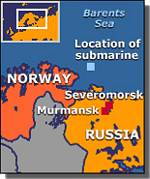 VOn the 12th. of August 2000, at 23.30 (11.30 PM) the Russian Atomic powered submarine Kursk, did not respond to radio messages, and was declared a wreck ... VOn the 12th. of August 2000, at 23.30 (11.30 PM) the Russian Atomic powered submarine Kursk, did not respond to radio messages, and was declared a wreck ...
Very slowly, the barge crawled off to the floating dock, where a delicate operation to nurse the two sections of the Kursk into the dock was undertaken, at last, she was safely inside, and the dock gates were closed. The most stunning salvage operation ever in Maritime History had been successfully completed. Read the article.
|
|
|
USS Arizona Memorial, Hawaii
|
 The first steps to erect a Memorial did not come about until the Territory of Hawii, established in 1949, the Pacific War Memorial Commission. Initially, it was US Admiral Arthur Radford, C-in- C Pacific, who recognized the need to remember those who had died, when he ordered a flagpole with a commemorative plaque at its base, be erected over the sunken battleship USS Arizona, on which, 1,177 crewmen had been killed during the Japanese attack. Read the article. The first steps to erect a Memorial did not come about until the Territory of Hawii, established in 1949, the Pacific War Memorial Commission. Initially, it was US Admiral Arthur Radford, C-in- C Pacific, who recognized the need to remember those who had died, when he ordered a flagpole with a commemorative plaque at its base, be erected over the sunken battleship USS Arizona, on which, 1,177 crewmen had been killed during the Japanese attack. Read the article.
|
|
|
Royal Navy Town Class Destroyers of WW2
|
Winston Churchill and President Franklin Roosevelt, in 1940, struck a deal under the US Lend Lease Act whereby, 50 old US WW1 Destroyers, which had been part of the US moth ball Fleet since the 1920's, were to be handed over to Britain, in exchange for 99 year leases on bases in the Western Hemisphere. Read the article.
|
|
|
WW2 Liberty Ships - The Bridge of Steel - Spanning the Atlantic - Linking Britain to America
|
In April of 1941, 800,000 tons of shipping was sent to the bottom of the Atlantic Ocean, by U-Boats, these ships were being sunk at a faster rate than they could be built. In September of 1940, Britain sent a delegation off to the United States with a ship design, and an order for 60 ships, designated as the Ocean Class, of 10,000 tons with a 2,500 horse power engine to produce a speed of 10 knots. This inititive really acted as the catalyst, setting in motion the US move to develop their ship building program, that resulted in the Liberty Ships. Read the article.
|
|
|
The Laws of the Navy
|
It is my understanding the "The Laws of the Navy" were written by a Royal Navy Captain R.A. Hopwood, at the turn of last century. He later went on to be promoted to Admiral. I had it in my old files, and one does not see it around too much these days, but I thought you may like it, and I think it deserves a wider audience today. Read the article.
|
|
|
Captain James Cook's Endeavour Journal 1768-71
|
Between the 27th. of May 1768 and the 12th. of July 1771, Captain James Cook circumnavigated New Zealand and charted the east coast of Australia. In his journal, Cook records landing at and naming Botany Bay and Endeavour River, the claiming of the east coast of Australia for England, and his encounters with the Aboriginal people. Read the article.
|
|
|
Anzac Class Frigate HMAS Warramunga. FFH-152
|
I'm excited, as a member of HMAS Warramunga Association I have been invited on board the second ship to carry that name. On Friday next 10 of us will board this Frigate in Port Phillip Bay, and sail in her back to her berth at Station Pier Port Melbourne. Read the article.
|
|
|
Marauders of the Sea, German Armed Merchant Raiders During World War 2
|
One of the lesser reported events of World War 2 is the success achieved by Germany's "Surface Raiders" or Armed Merchant Ships. Look at a globe depicting the world's land masses, and you will be impressed by the vast expanses of oceans that circle the earth, in fact, seven tenths of the World's surface is water. These oceans became "Home" for the "Marauders of the Sea" in W.W.2 carrying a slew of names such as "Atlantis," (no doubt the doyen of this group) "Orion," "Widder." "Thor," "Pinguin," "Komet," "Michel," "Stier," and "Togo, and, the best known, "Kormoran," who was involved with the disappearance and death of the famous Australian Cruiser "Sydney." In its own small way this work seeks to redress the paucity of reportage in this area of Maritime History. Read the article.
|
|
|
H.M.A.S. Canberra and the Battle of Savo Island
|
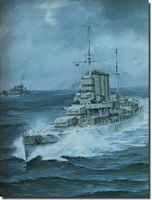 I hurried to my action station in the fore control - there was an explosion amidships, we were hit on the 4" gundeck, the Walrus aircraft was blazing fiercely on the catapult. A shell exploded on the port side just below the compass platform and another just aft of the fore control. The plotting office received a direct hit. The shell that demolished the port side of the compass platform mortally wounded the Captain, killed Lieutenant Commander Hole, the Gunnery Officer, wounded Lieutenant Commander Plunkett-Cole, the Torpedo Officer and severely wounded Midshipmen Bruce Loxton and Noel Sanderson. Read the article. I hurried to my action station in the fore control - there was an explosion amidships, we were hit on the 4" gundeck, the Walrus aircraft was blazing fiercely on the catapult. A shell exploded on the port side just below the compass platform and another just aft of the fore control. The plotting office received a direct hit. The shell that demolished the port side of the compass platform mortally wounded the Captain, killed Lieutenant Commander Hole, the Gunnery Officer, wounded Lieutenant Commander Plunkett-Cole, the Torpedo Officer and severely wounded Midshipmen Bruce Loxton and Noel Sanderson. Read the article.
|
|
|
Under Water Warfare, The Struggle Against the Submarine Menace, 1939 -1945
|
 This work is dedicated to all who fought at sea or in the air in the Battle of the Atlantic, the Sailors in Naval ships, the Crews of the Merchant Navy, and the Airmen from Coastal Command . This battle raged from the day war was declared on Sunday the 3rd. of September, 1939, to the 4th. of May 1945, when Admiral Donitz ordered his U-Boats to cease operations, and return to base. Read the article. This work is dedicated to all who fought at sea or in the air in the Battle of the Atlantic, the Sailors in Naval ships, the Crews of the Merchant Navy, and the Airmen from Coastal Command . This battle raged from the day war was declared on Sunday the 3rd. of September, 1939, to the 4th. of May 1945, when Admiral Donitz ordered his U-Boats to cease operations, and return to base. Read the article.
|
|
|
Tragedy at Sea
|
During the months of 1945 prior to the surrender of all German Sea. Air, and Land forces to the Allies on May the 8th, a series of disasters at sea happened. A horrific number of deaths resulted, and five German merchant ships were involved. One may well pose the question "Why are so many people unaware of these actions and this huge loss of life?" Read the article.
|
|
|
The Victoria Cross at Sea
|
In December of 1854, an ex Naval Officer and now a Liberal Member of Parliament, Captain Thomas Scobell, placed a motion before the House of Commons that: "An Order of Merit should be awarded to persons serving in the Navy or Army for distinguished and prominent personal gallantry, and to which, every grade and individual from the highest and lowest, may be admissable." Read the article.
|
|
|
The Death of HMAS Armidale
|
Now, more than fifty years on, in a belated attempt to honour him, one of the RAN’s Collins Class Submarines will be christened Sheehan, after this young hero, who gave his life so willingly in trying to save the lives of others. The gallant Armidale and Teddy Sheehan will long remain a part of history in the annals of the Royal Australian Navy. Read the article.
|
|
|
Beneath The Southern Cross
|
In wartime, and during troubled times in the Northern Hemisphere, many a Royal Australian Navy ship and their crews have left home to serve north of the equator.
After a long stint away, at last their ship is steering a southerly course, it crosses the equator. When the sun sets, and dusk falls, the stars will slowly become visible, the sailors will look for two old friends, two of the brightest stars to be seen in the heavens above. Read the article.
|
|
|
HMAS Australia to the rescue
|
Although this rescue took place almost sixty two years ago, I can still visualise the joy on the faces of those we rescued, and remember the anger and sadness we all experienced at having to leave the remaining four airmen to face a certain death. Read the article.
|
|
|
HMAS Australia in the Atlantic
|
Sunday the 9th. of February dawned, it happens to be my 19th. birthday, still at sea, and a long long way from home. Finally, we shepherd our segment of the convoy into Durban harbour, its the 16th. of February, our long journey, taking 5 weeks, is over, all the ships that commenced this voyage have arrived safely at their destination, our job is done. Read the article.
|
|
|
Capturing the Enigma Machine
|
Baker-Cresswell, in a split second decision, stopped his Destroyer from ramming this U-Boat, and most likely sinking her. On his bridge, he recalled in his mind attending a Staff College lecture about the capture of ciphers in 1914, from a stricken German Naval vessel. Read the article.
|
|
|
The Sinking of British Battleship, HMS Royal Oak, at Scapa Flow, by German Submarine, U-47
|
 Just after going to war against Britain in September 1939, the German U-Boat Commander, Admiral Donitz, was keen to upset both the Royal Navy, and her First Lord of the Admiralty, Winston Churchill, by breaching the defences of Scapa Flow and sinking a major Naval Vessel. Just after going to war against Britain in September 1939, the German U-Boat Commander, Admiral Donitz, was keen to upset both the Royal Navy, and her First Lord of the Admiralty, Winston Churchill, by breaching the defences of Scapa Flow and sinking a major Naval Vessel.
Donitz studied the reconnaissance photographs, and decided that a 50 foot gap existed between the blockships which had been sunk in the northern end of the most eastern entrance in Kirk Sound, and he thought that a surfaced Submarine could penetrate this narrow access at the time of slack water. But, a night attack would be mandatory. Read the article.
|
|
|
The execution of Japanese Admiral Isoroku Yamamoto, carried out on the 18th. of April 1943
|
![[Image]](Images/YamamotoSM.gif) The American force's arrival over Bouganville had been timed to perfection, probably more good luck than good planning, they sighted the Japanese group, but it contained two Betty bombers, and not just one as expected. Thus, to ensure that the Japanese Admiral was disposed of, both bombers would have to be destroyed. Both Lamphier and Barber were later to claim they were the one to shoot down the Betty with Admiral Yamamoto onboard. Read the article. The American force's arrival over Bouganville had been timed to perfection, probably more good luck than good planning, they sighted the Japanese group, but it contained two Betty bombers, and not just one as expected. Thus, to ensure that the Japanese Admiral was disposed of, both bombers would have to be destroyed. Both Lamphier and Barber were later to claim they were the one to shoot down the Betty with Admiral Yamamoto onboard. Read the article.
|
|
|
Photo exhibit - Coral Sea
|
A newspaper article and photo exhibit generate some interest for the Coral Sea Photographic Exhibition at the Naval Memorial Centre at the English Speaking Union, 148 Toorak Rd. West, South Yarra May 6 - 8, 2002. Read the article.
|
|
|
International Date Line
|
The International Date Line is the imaginary line on the Earth that separates two consecutive calendars. That, the date in the Eastern hemisphere, to the left of the line, is always one day ahead of the date in the western hemisphere. It has been recognized as a matter of convenience and has no force in international law. Read the article.
|
|
|
Anzac Cove, Gallipoli Turkey, for Anzac Day Ceremony 1998
|
 To make this pilgrimage, was both a wonderful and memorable experience for both Denise and myself. At different times whilst visiting the many cemeteries, we did shed quiet tears. One is shattered by the young ages of so many of these original Anzacs, only 15, 16, 17, the youngest but 14, cut down before they had time to become men, and really commence their lives. Also a brief about Mustafa Kemal Ataturk, the First President of the Republic of Turkey. Read the article. To make this pilgrimage, was both a wonderful and memorable experience for both Denise and myself. At different times whilst visiting the many cemeteries, we did shed quiet tears. One is shattered by the young ages of so many of these original Anzacs, only 15, 16, 17, the youngest but 14, cut down before they had time to become men, and really commence their lives. Also a brief about Mustafa Kemal Ataturk, the First President of the Republic of Turkey. Read the article.
|
|
|
Blockade Runner Ramses
|
Our sharp lookout had located Ramses - quick identification sealed her fate, the combination of scuttling charges and accurate Allied gun fire prevented a valuable cargo reaching Germany, ten Norwegians were freed to fight again, and for seventy-eight Germans the war had ended. Read the article.
|
|
|
Kamikaze Attack
|
In January 1945, I was serving as a Lieutenant RAN, in the 8 inch gunned heavy cruiser HMAS Shropshire, and we were part of the bombardment force to be used to soften up the landing beaches where US troops were to storm ashore on January 6th of that month. We had been subjected to Kamikaze attacks from Japanese aircraft, and had some close calls, but had shot down several of our attackers. Read the article.
|
|
|
Searching for the USS Canberra's ship's bell and visiting Washington
|
 After my Canberra was sunk in 1942, the USN named a heavy cruiser USS Canberra in 1943, in 1967 when the ship came to Melbourne, the ship's bell was struck from the mainmast and used as the font to christen my then, 6 year old son Raymond Edwin Gregory, Lady Dixon who launched the ship back in 1943 and the ship's Captain Edwin Rosenberg USN became his God Mother and God Father. Read the article. After my Canberra was sunk in 1942, the USN named a heavy cruiser USS Canberra in 1943, in 1967 when the ship came to Melbourne, the ship's bell was struck from the mainmast and used as the font to christen my then, 6 year old son Raymond Edwin Gregory, Lady Dixon who launched the ship back in 1943 and the ship's Captain Edwin Rosenberg USN became his God Mother and God Father. Read the article.
|
|
|
|
|
|